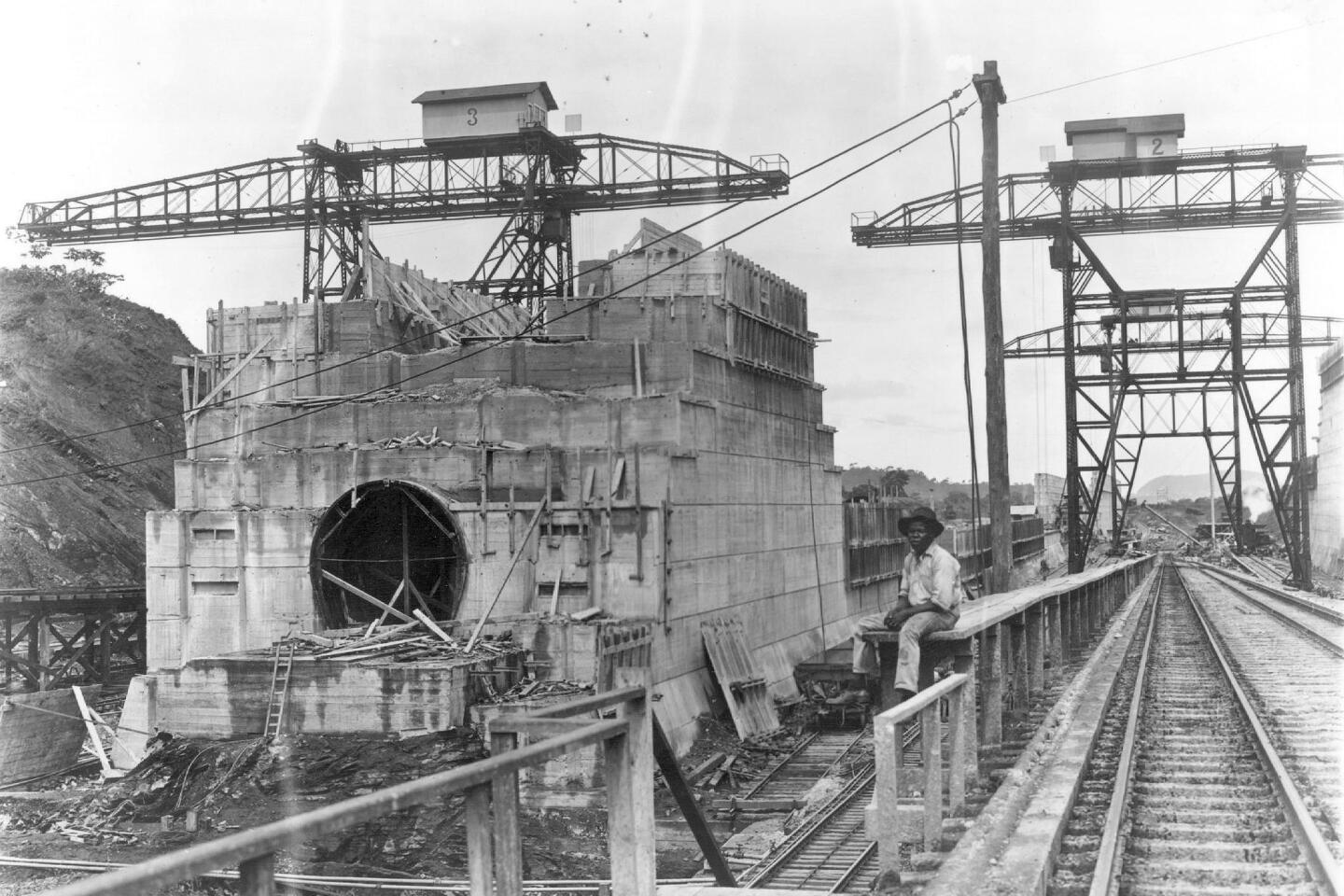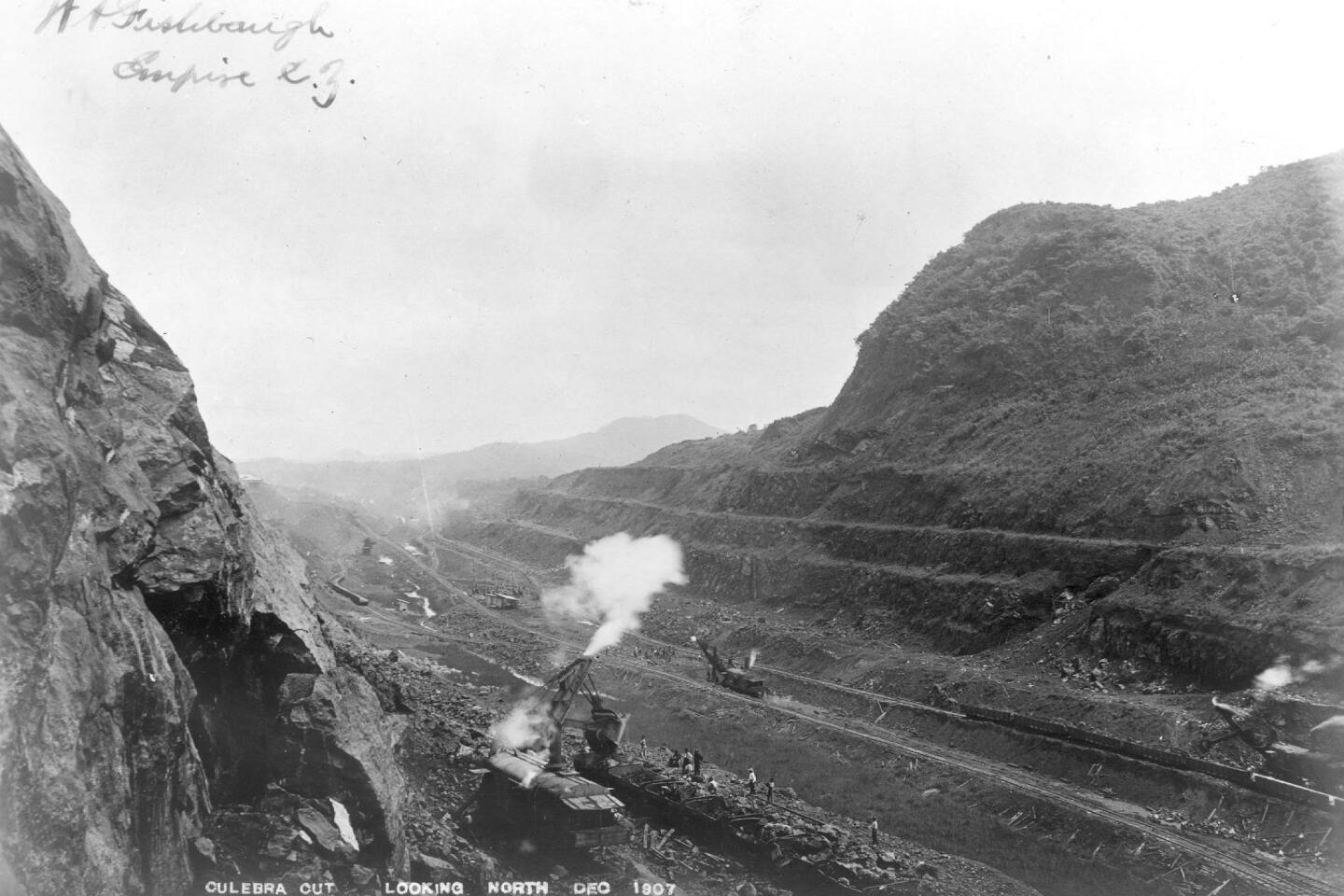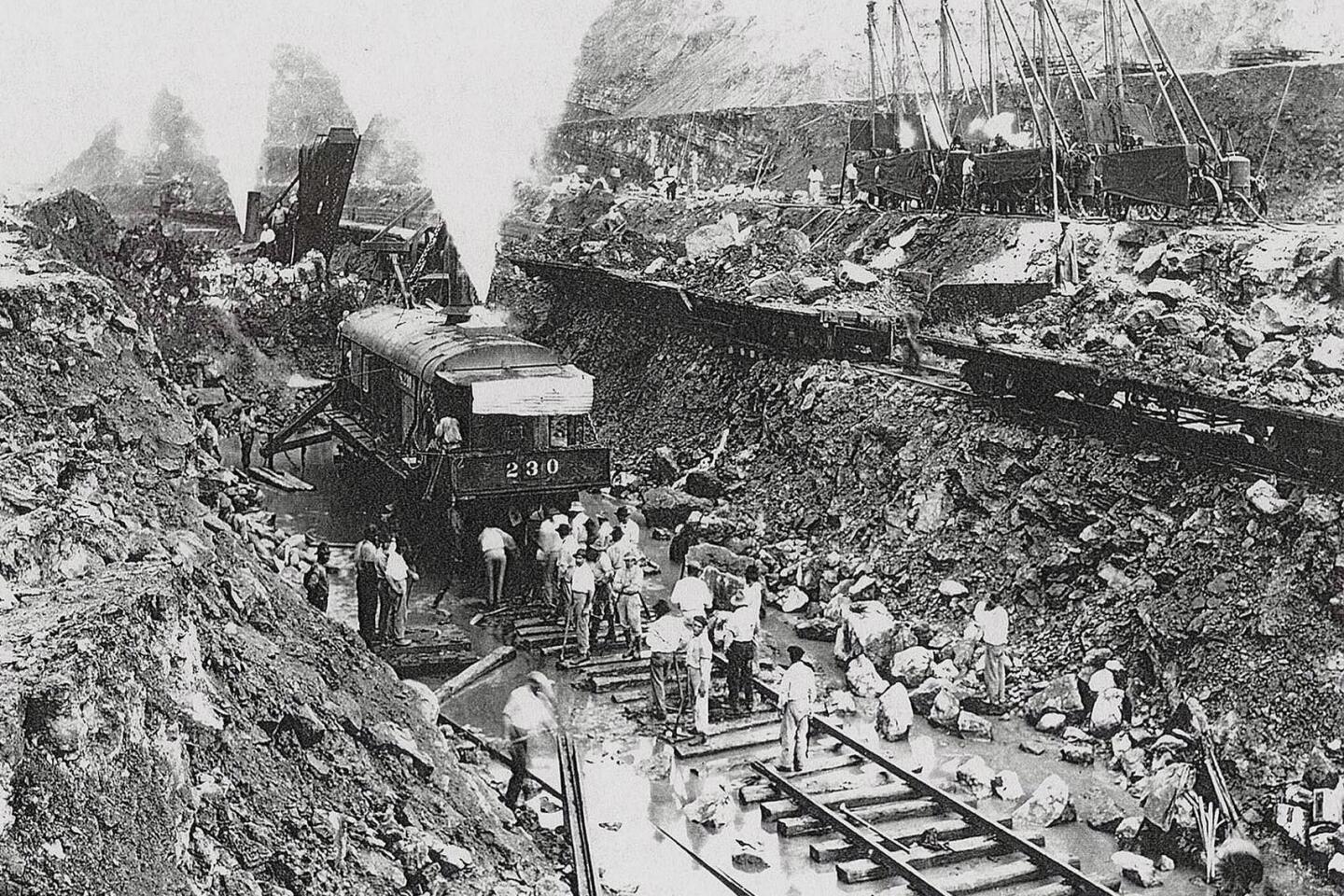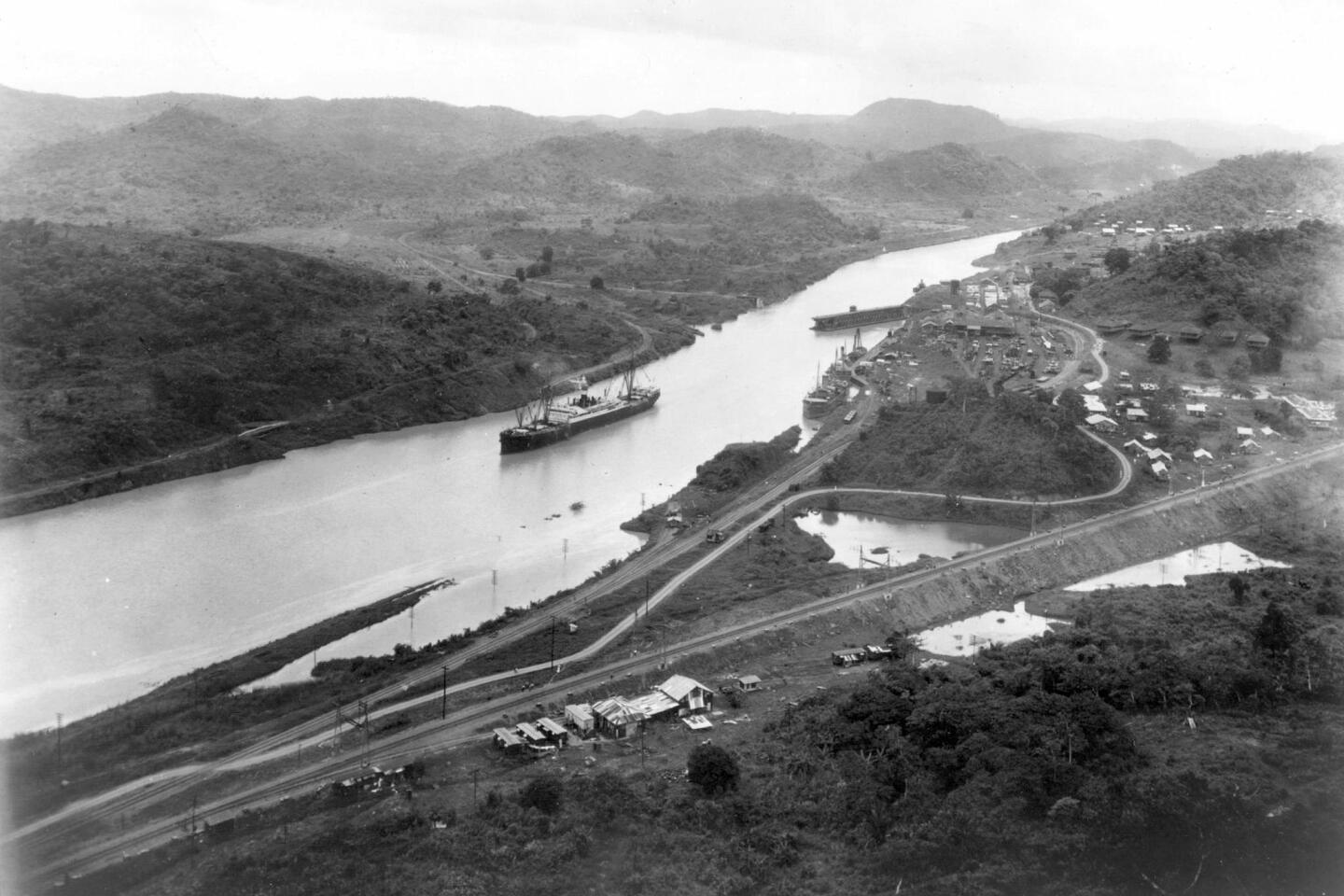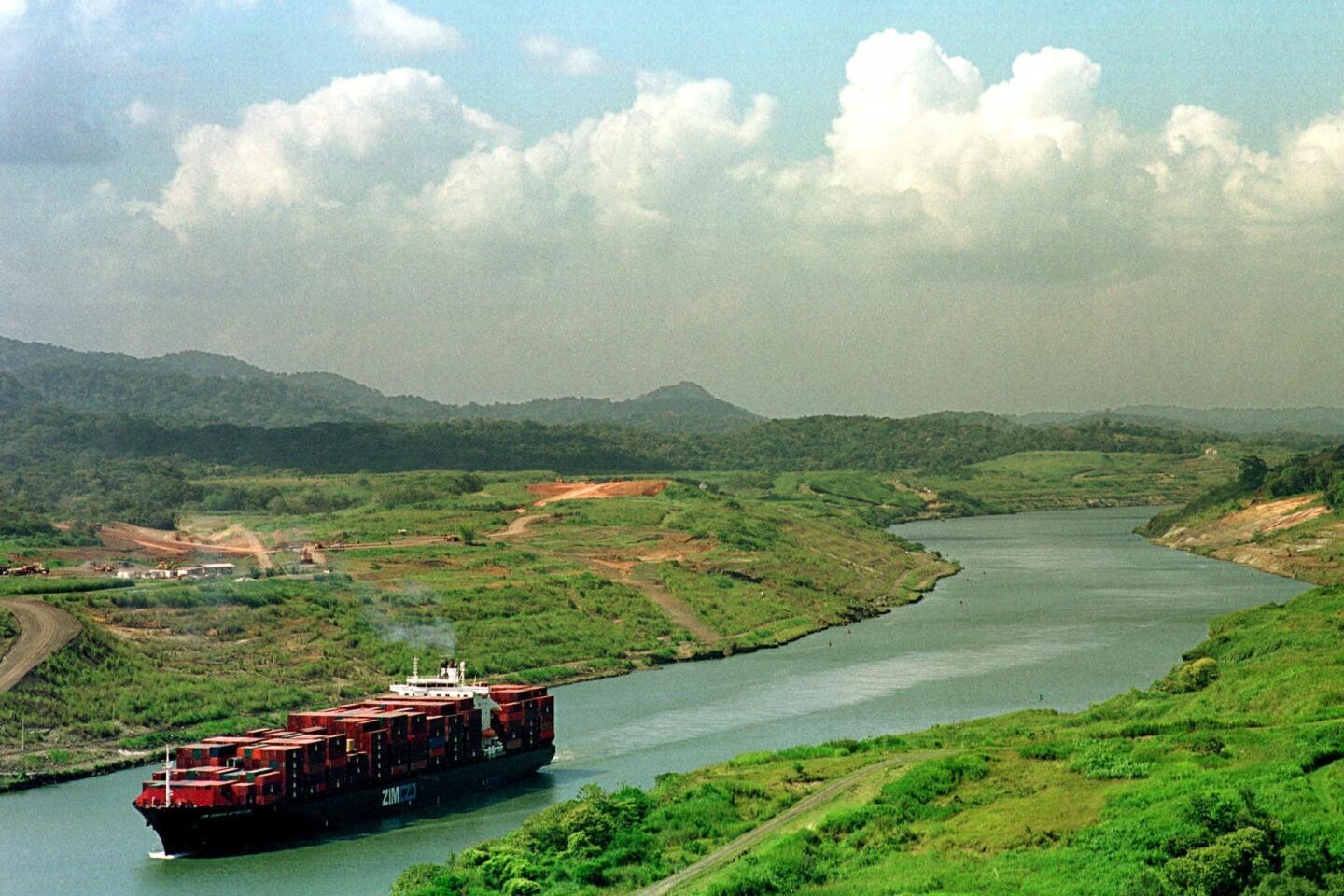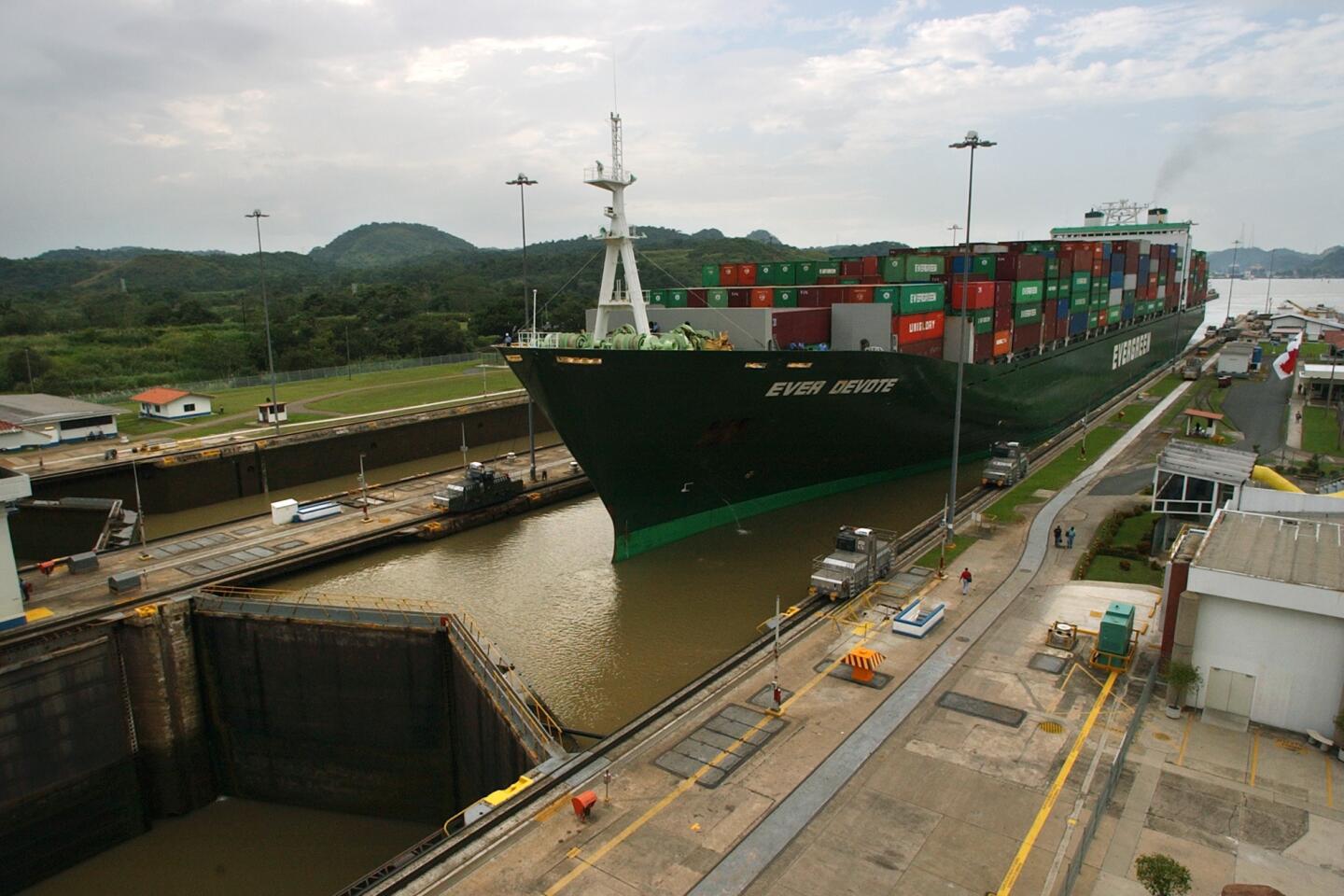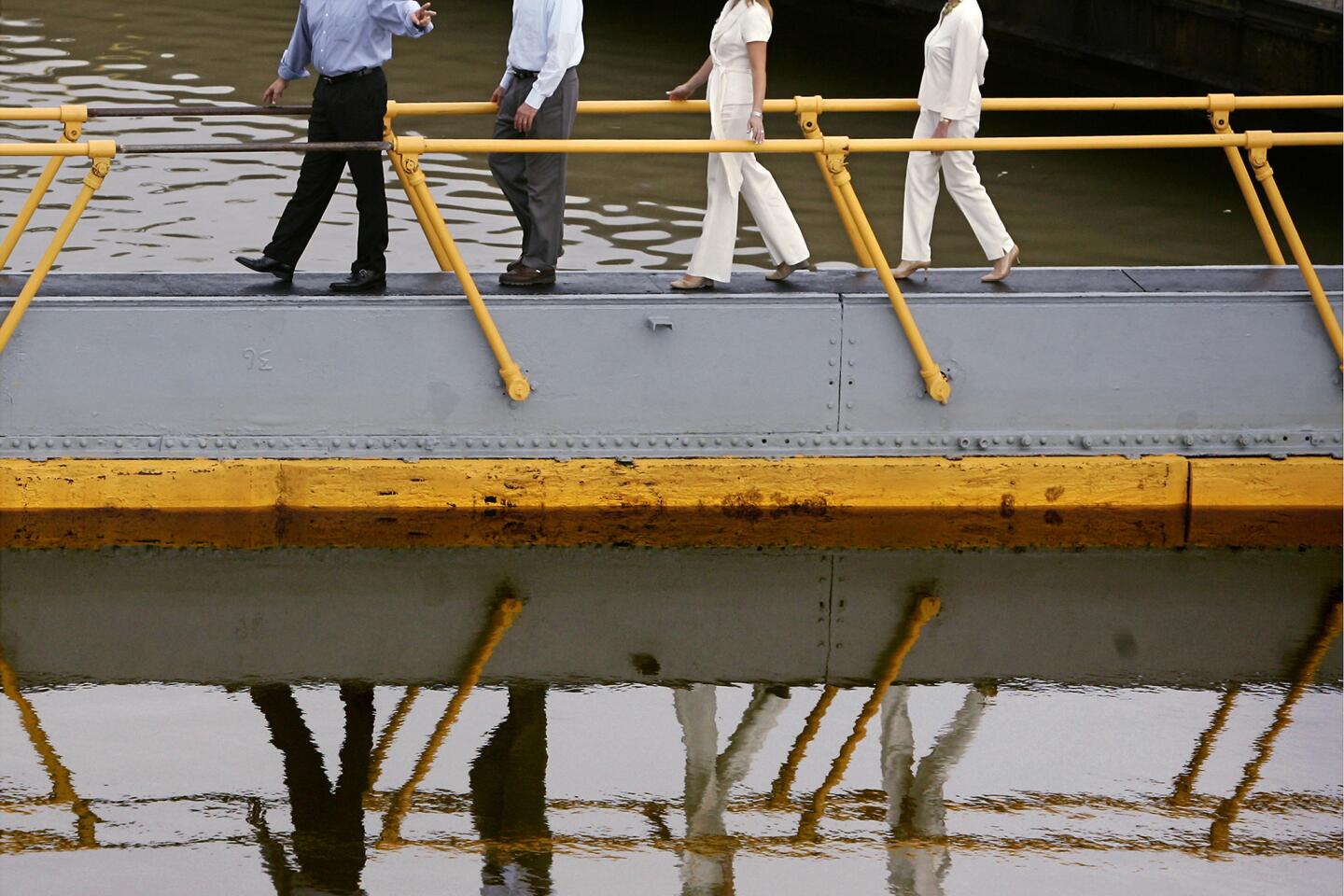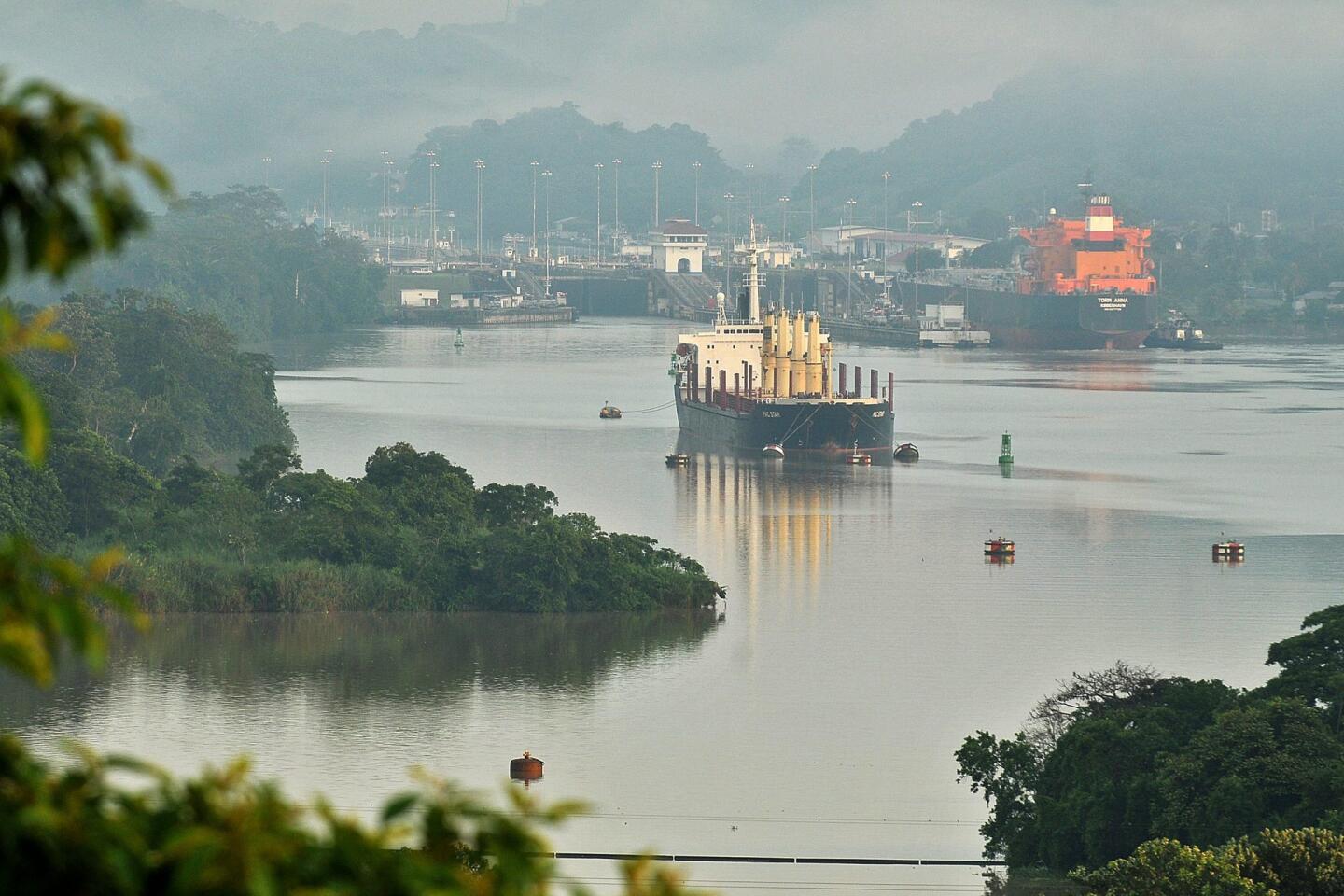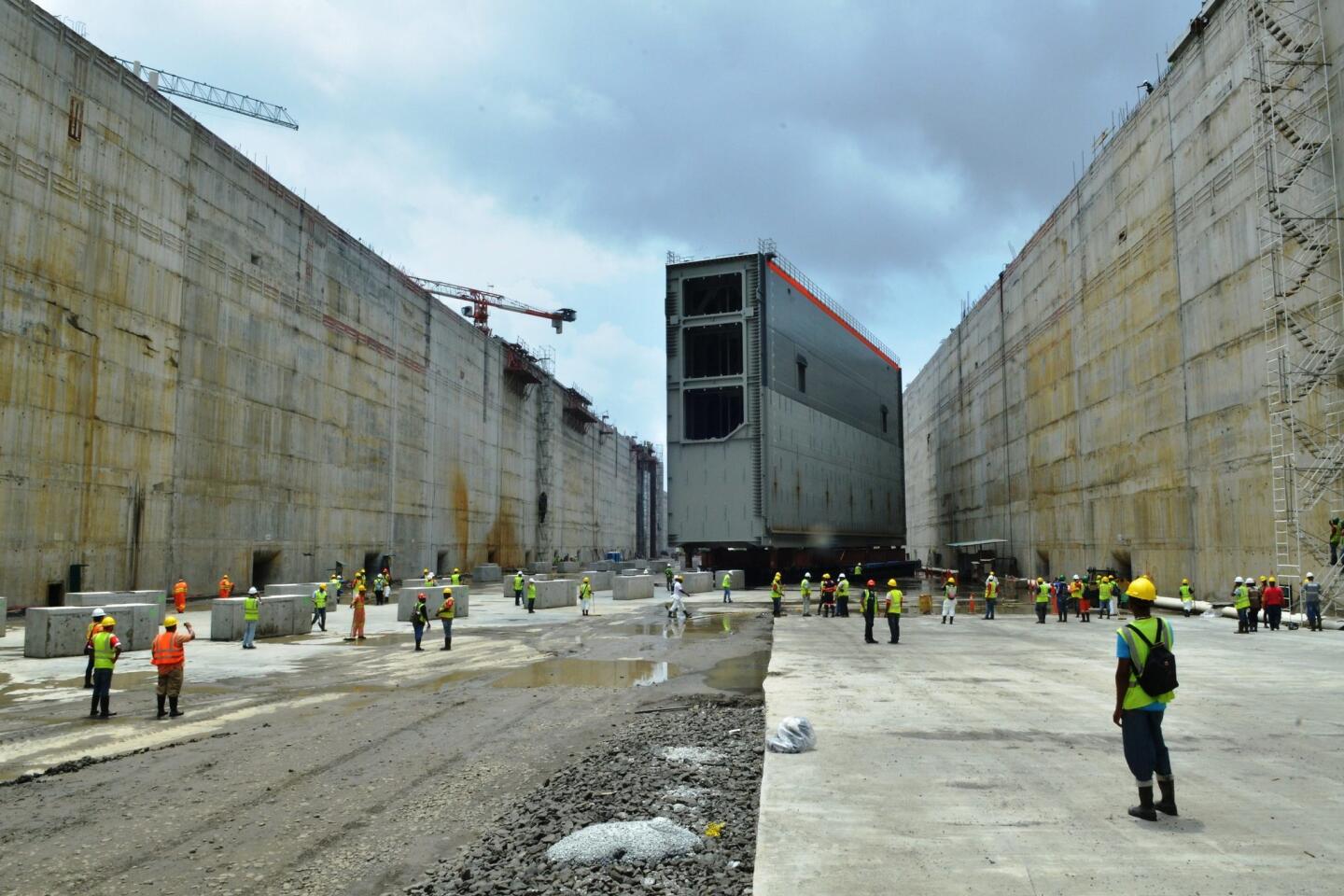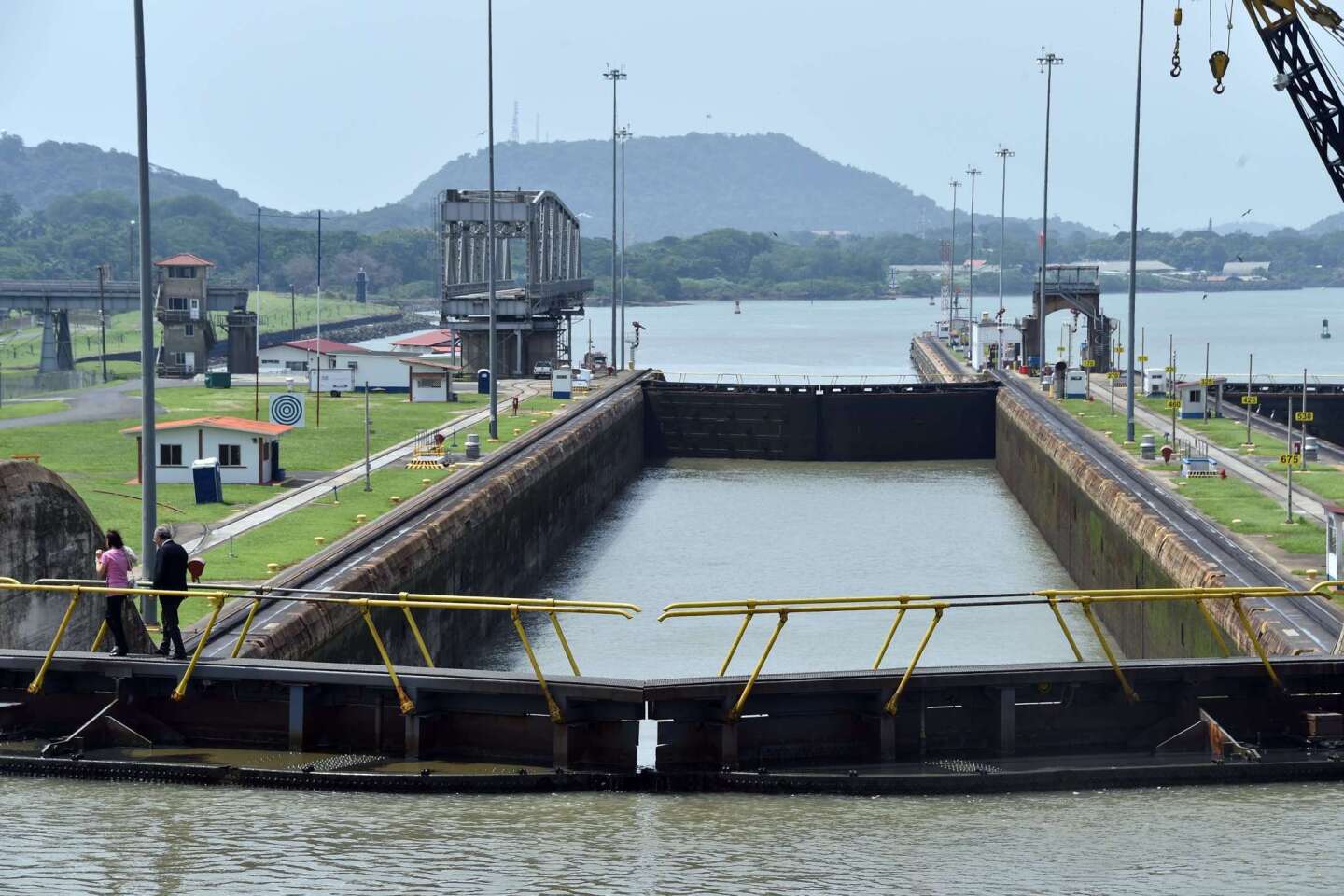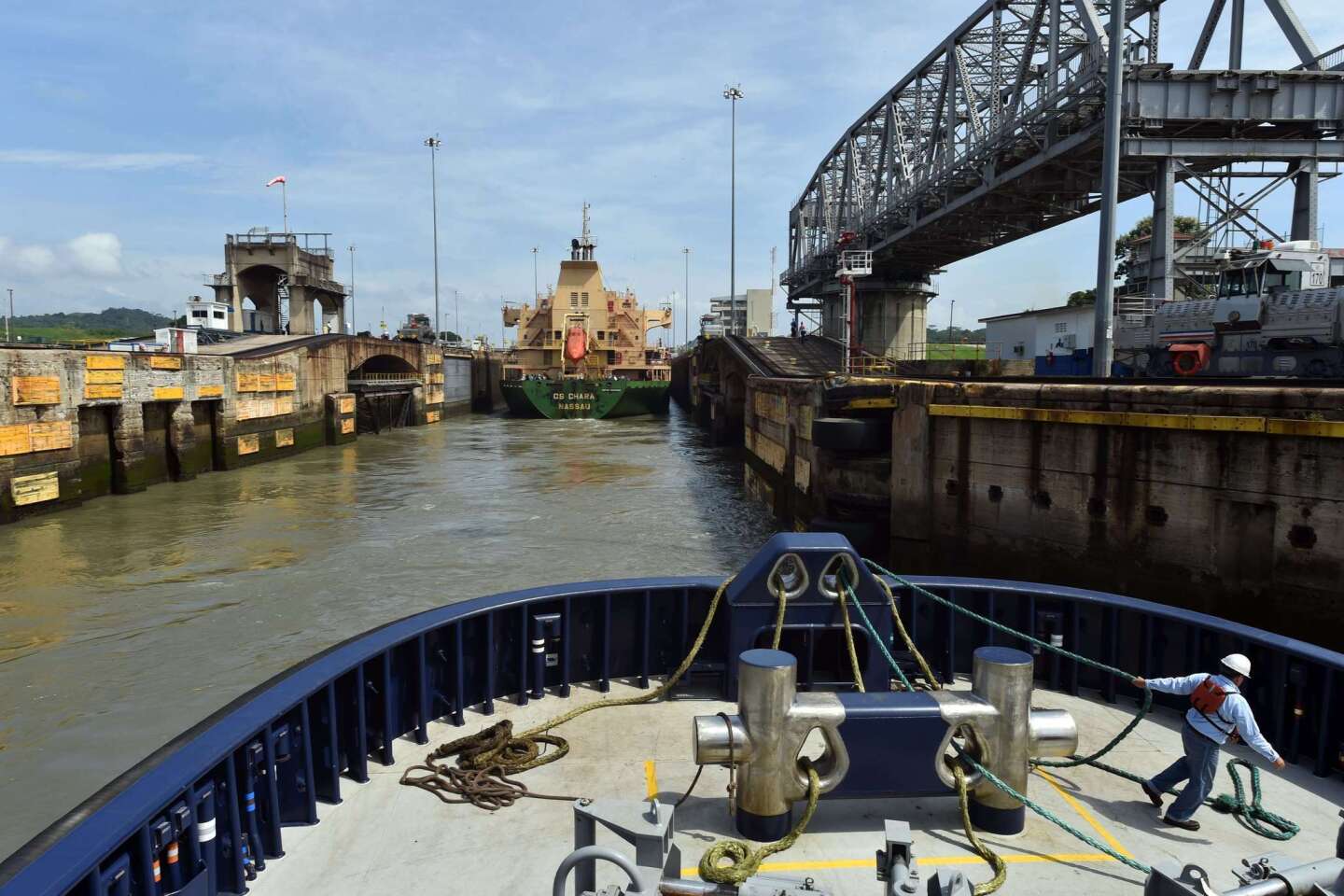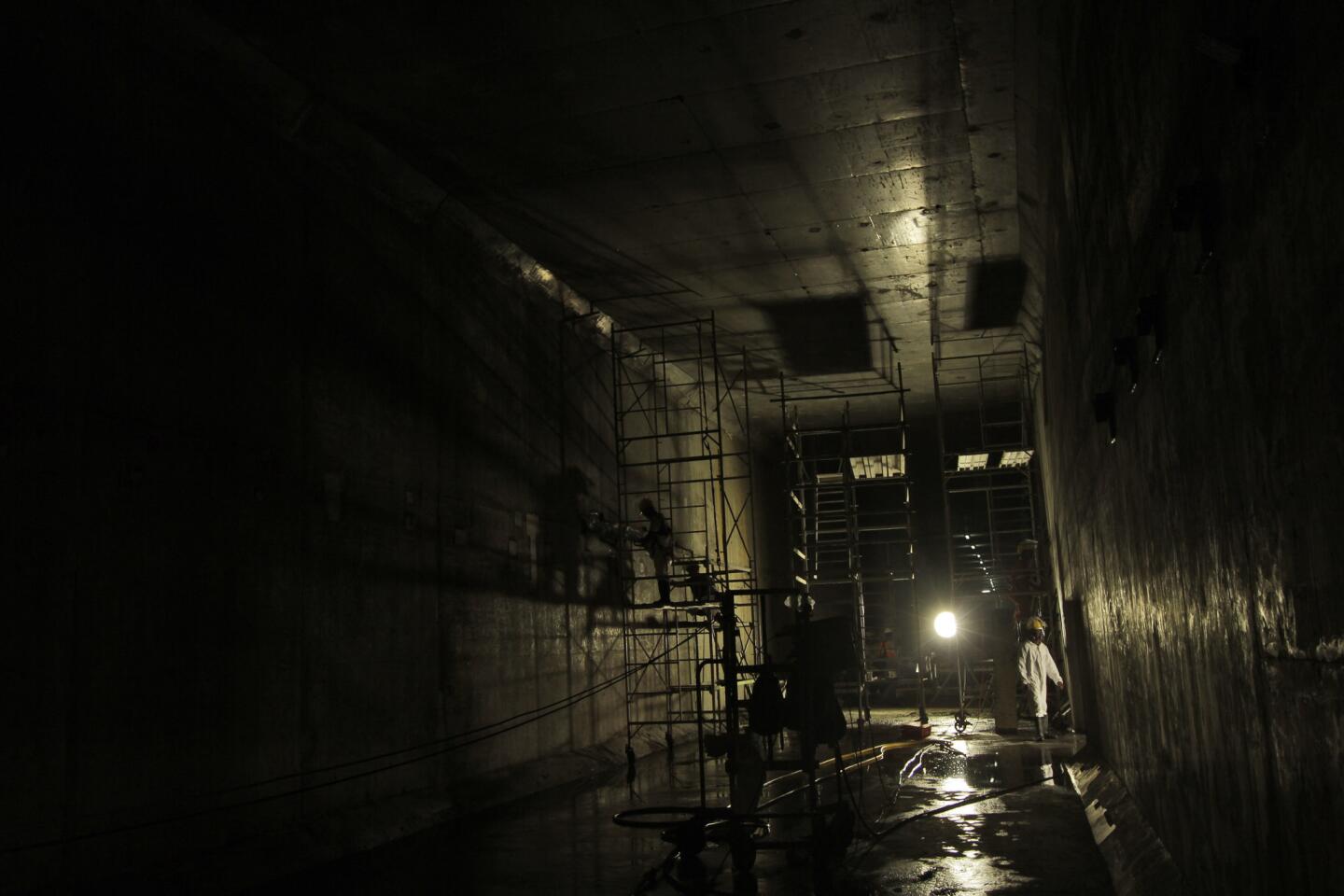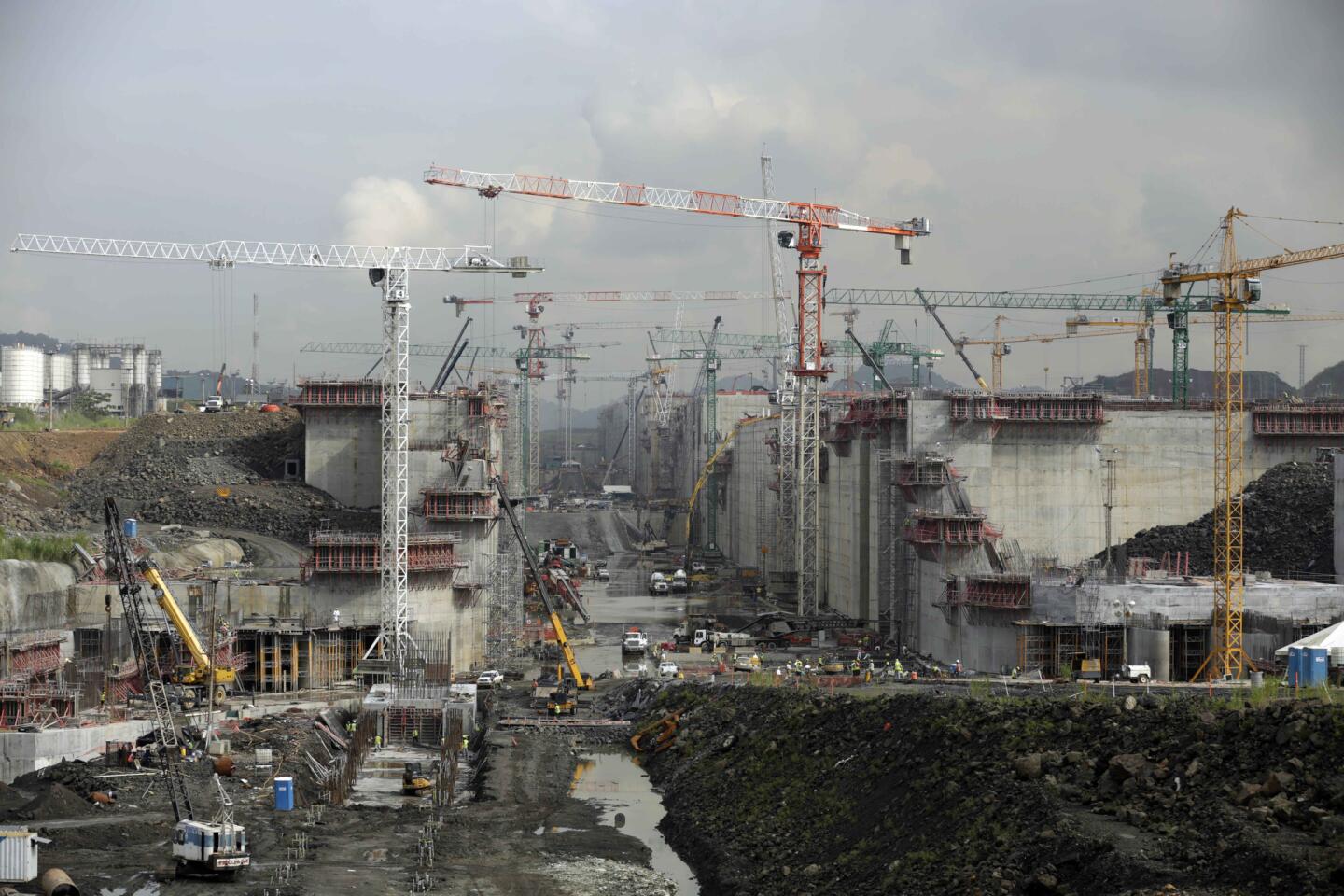From the archives:: A timeline of the Panama Canal
- Share via
On Sunday, heads of state, diplomats, shipping executives and port operators will gather for the inauguration of a deeper, wider Panama Canal that can handle twice as much cargo.
$5.4-billion expansion of Panama Canal will transform shipping in the Americas »
The $5.4-billion project, nine years in the making, is aimed at boosting the competitiveness of the 50-mile shortcut between the Atlantic and the Pacific – one that has been constantly changing for the last 102 years. Here’s a look at the canal’s turbulent history, as depicted on the pages of the Los Angeles Times.
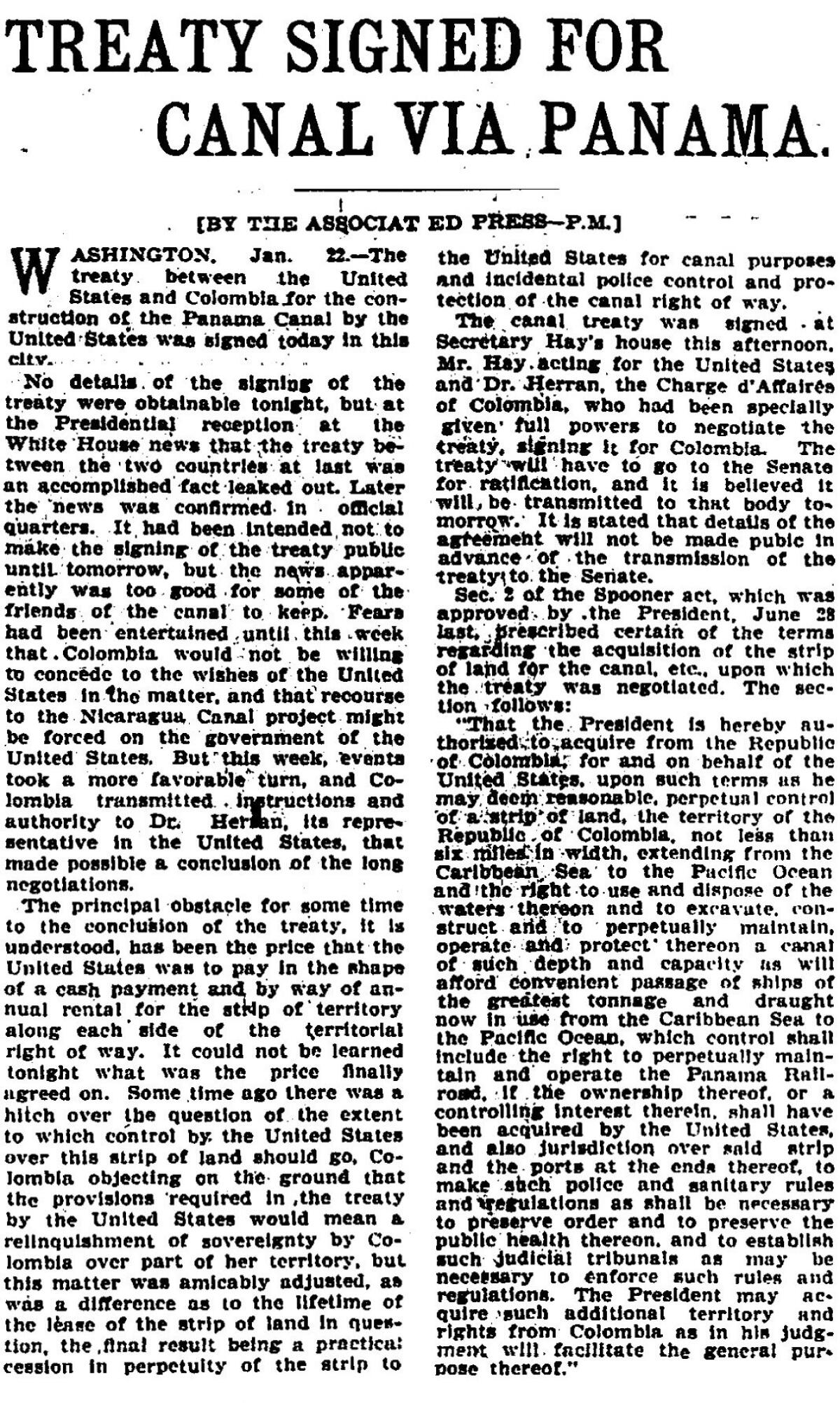
Jan. 22, 1903
The development of the Panama Canal began with the signing of the Hay-Herran Treaty by the United States and Colombia, which owned the Isthmus of Panama until November 1903. Although Colombia never ratified the treaty, which would have given up partial control of the isthmus in exchange for $10 million and an annual payment of $250,000, it caused the U.S. to support a Panamanian uprising that resulted in independence and the eventual construction of the canal.
Some time ago there was a hitch over the question of the extent to which control by the United States over this strip of land should go.
— The Associated Press in the Jan. 23, 1903, edition of The Times
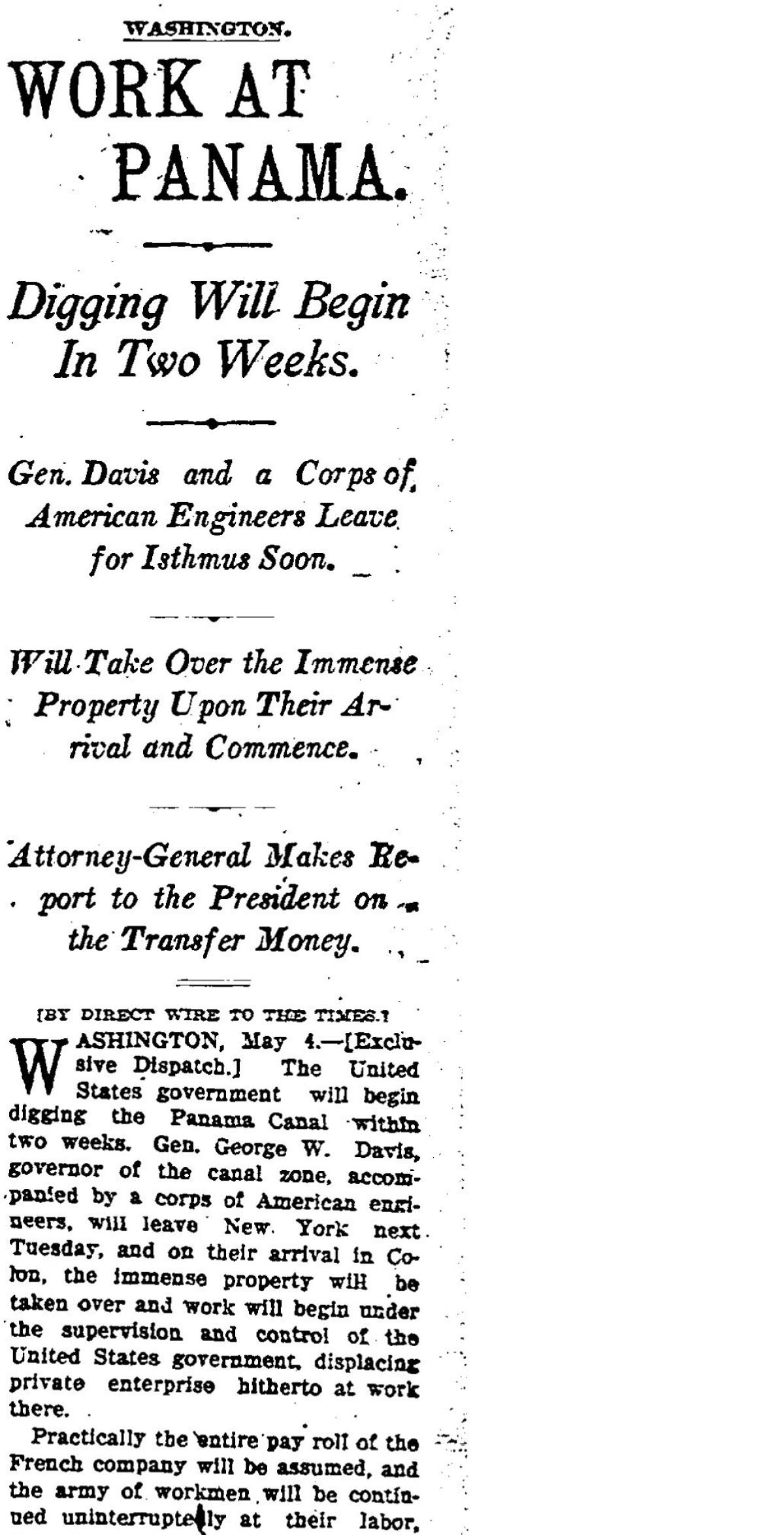
May 4, 1904
The dedication of the Panama Canal project was held after the U.S. purchased all remaining property from France, which had tried and failed to build the canal in the 1880s. That $40 million, coupled with the $10 million the U.S. paid Panama in February 1904 for control of the canal, laid the groundwork for construction later that year. In February 1907, President Theodore Roosevelt appointed Col. George Washington Goethals chief engineer, using his military background to help see the project through to completion.
The excavation of Culebra cut, which is considered one of the most difficult engineering problems of the entire canal, will be pushed as rapidly as possible.
— Direct Wire in the May 5, 1904, edition of The Times
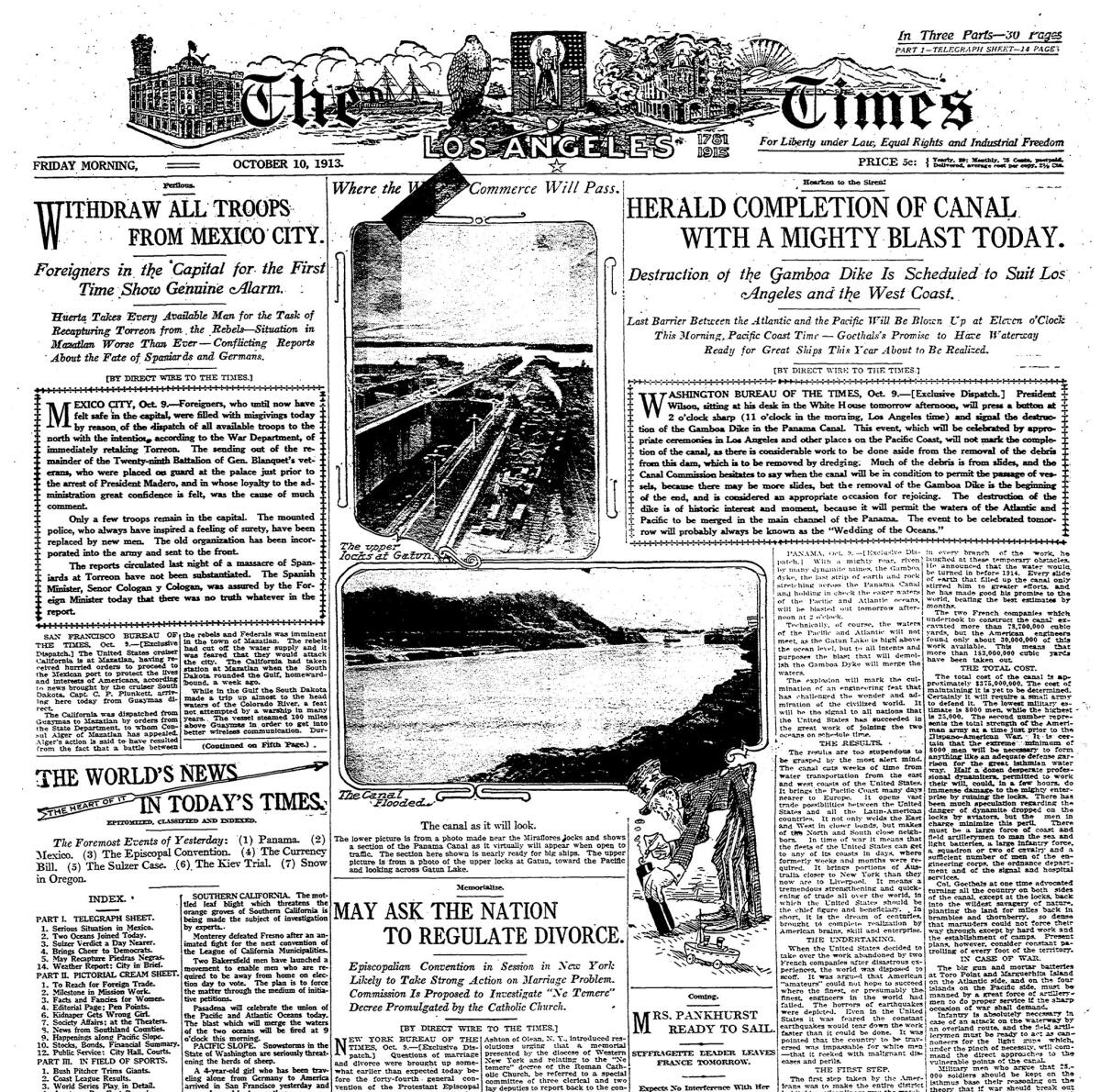
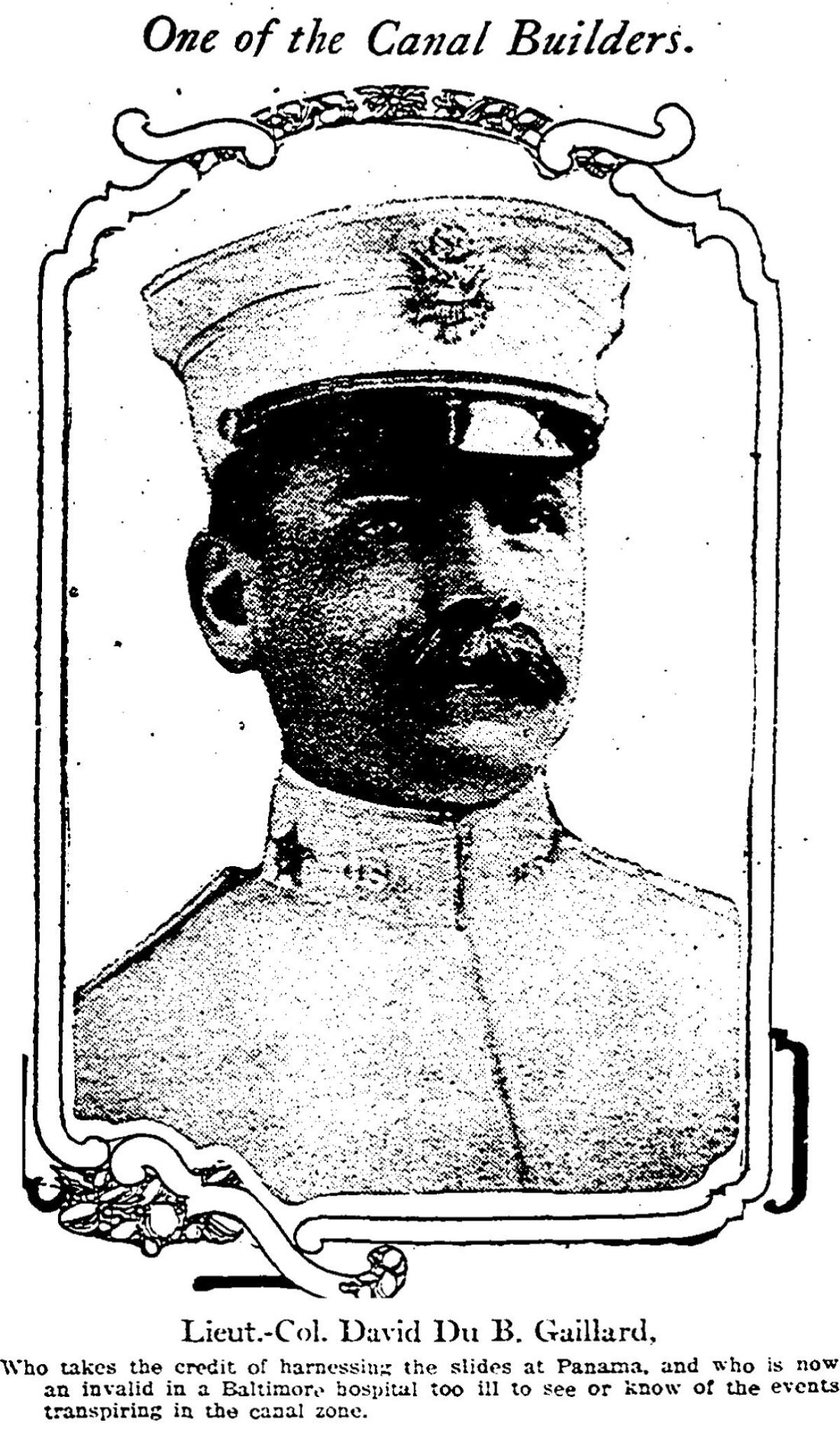
Oct. 10, 1913
After nearly a decade of construction, President Woodrow Wilson sent a signal from the White House to blow up the Gamboa Dike, causing water to flow into the Panama Canal and joining the Atlantic and Pacific oceans for the first time. Although the explosion did not mark the completion of the project, the event was celebrated around the world, with The Times describing it as “too stupendous to be grasped by the most alert mind.”
The event to be celebrated tomorrow will probably always be known as the 'Wedding of the Oceans.'
— Direct Wire in the Oct. 10, 1913, edition of The Times
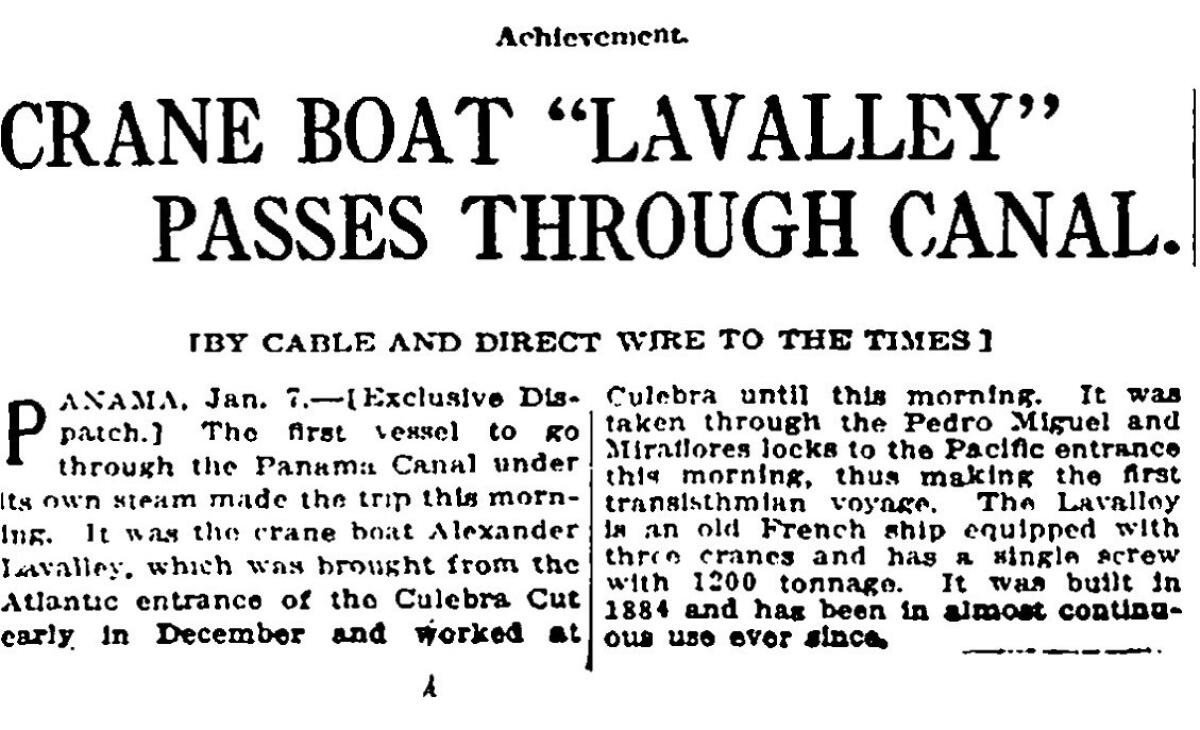
Jan. 7, 1914
The Alexandre La Valley, an old French crane boat, reached the Pacific Ocean and became the first self-propelled vessel to cross the Panama Canal. The crane moved through the waterway during the final stages of construction, which would end later that year.
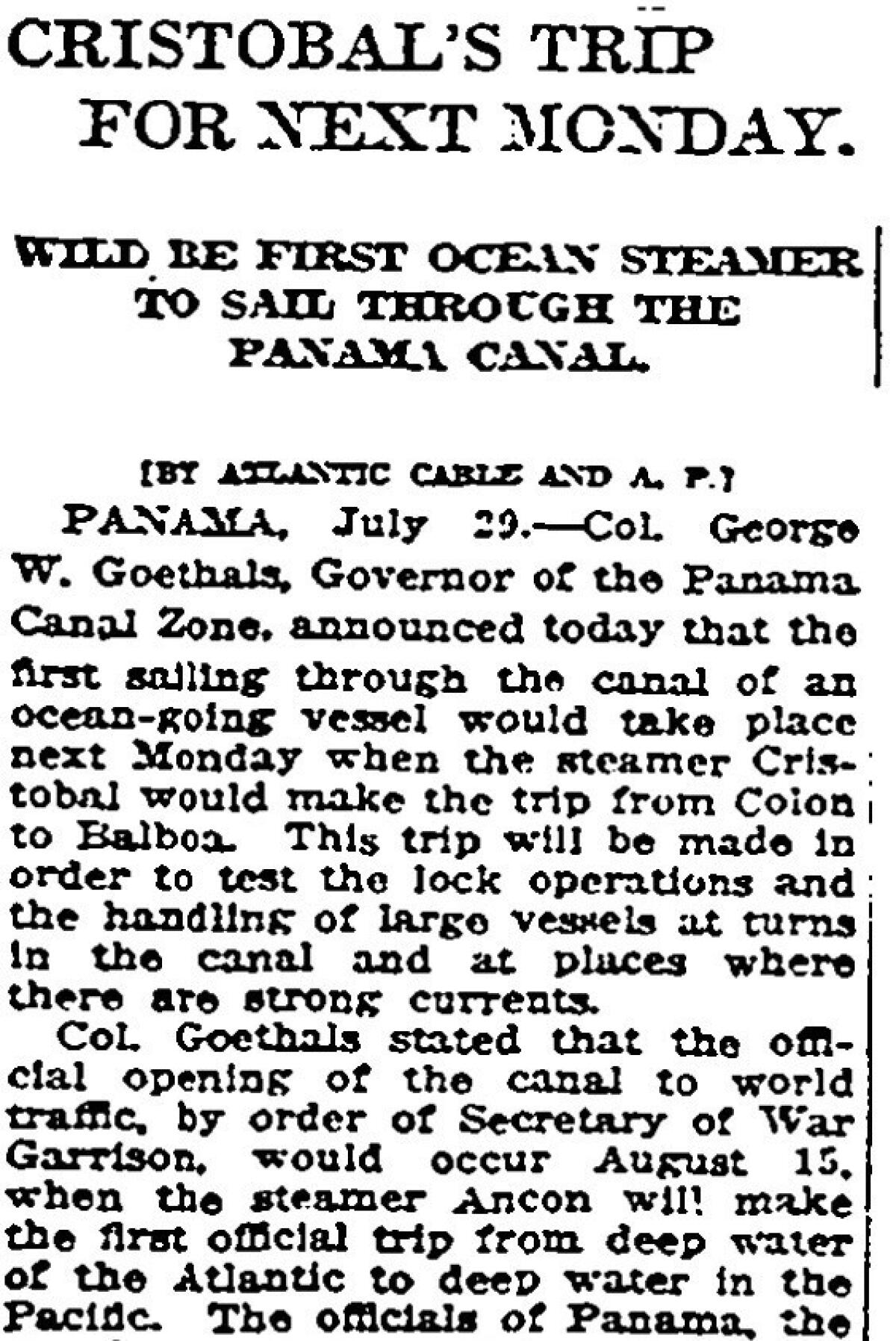
Aug. 3, 1914
The S.S. Cristobal became the first passenger vessel to cross the entirety of the Panama Canal. The steamship, which was renamed Cristobal from Tremont after the canal’s Atlantic port, was the sister of the S.S. Ancon, which would become the first boat to officially transit the waterway. Both were among the largest U.S. commercial ships in service at the time.
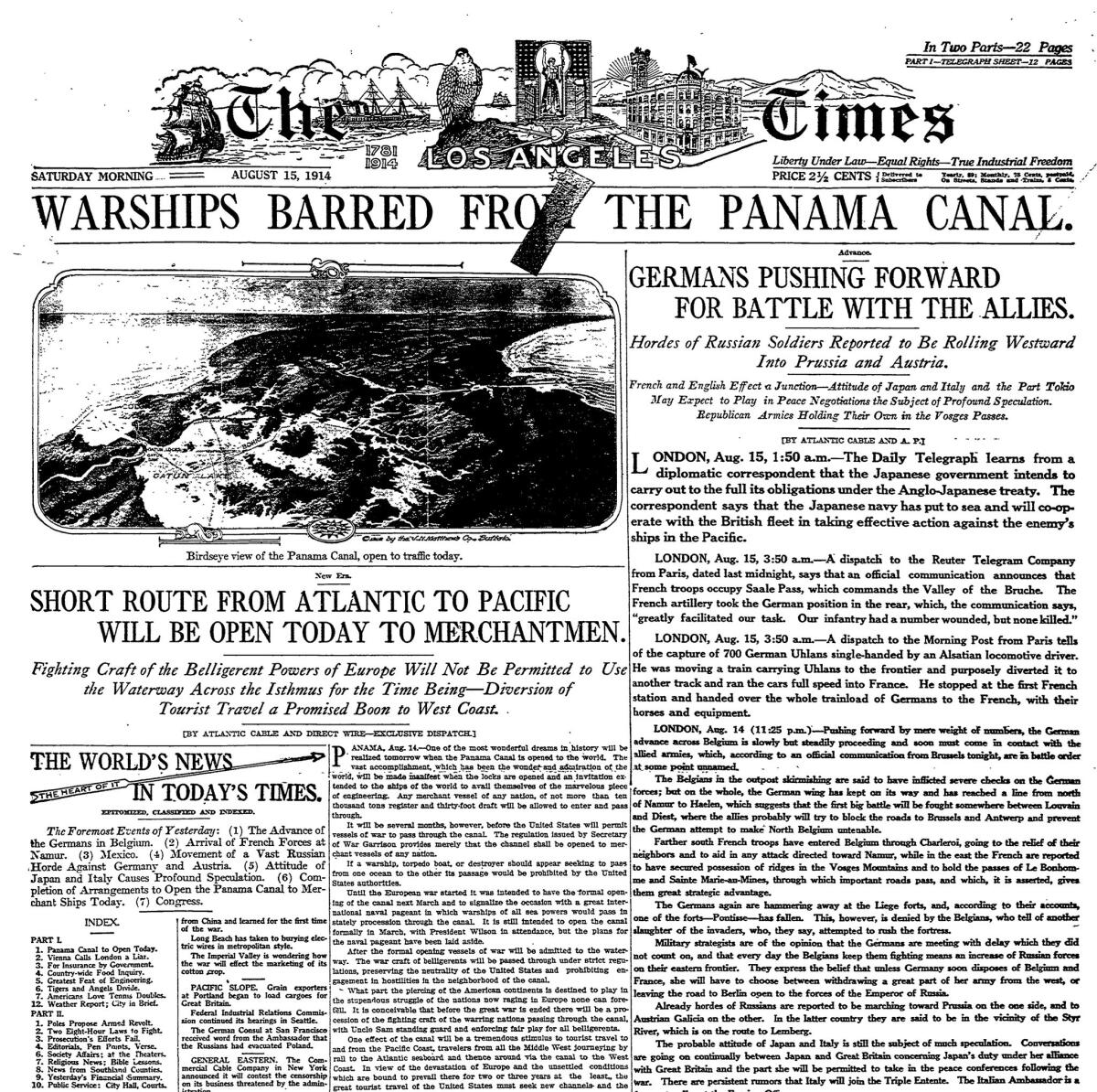
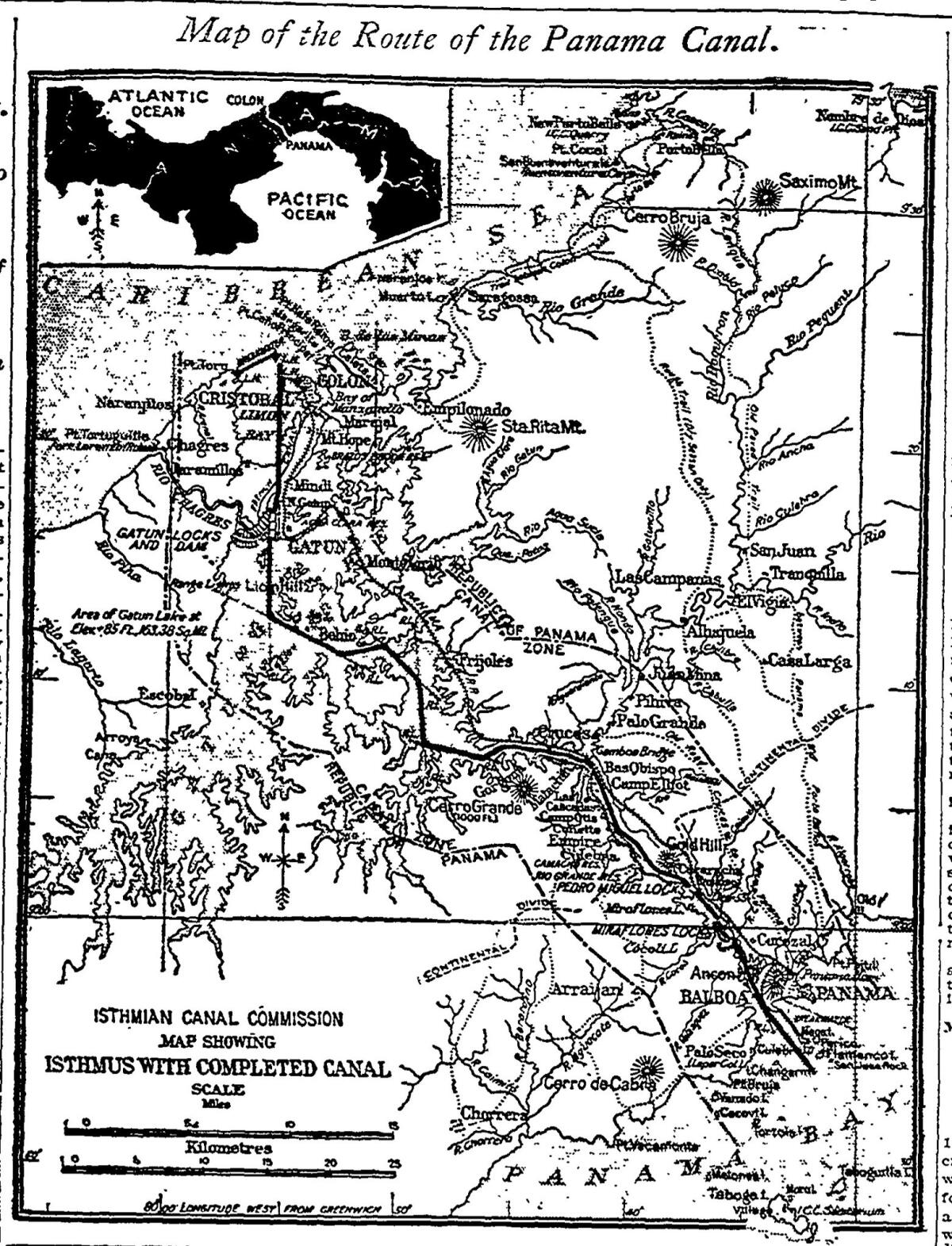
Aug. 15, 1914
Construction was completed and the Panama Canal officially opened for traffic from around the world with the passage of the S.S. Ancon cargo ship. In total, the project cost the U.S. almost $375 million — the rough equivalent of $8.6 billion today. For the first several months of its operation, the canal was closed to warships as World War I began in Europe.
The vast accomplishment, which has been the wonder and admiration of the world, will be made manifest when the locks are opened.
— Atlantic Cable and Direct Wire in the Aug. 15, 1914, edition of The Times
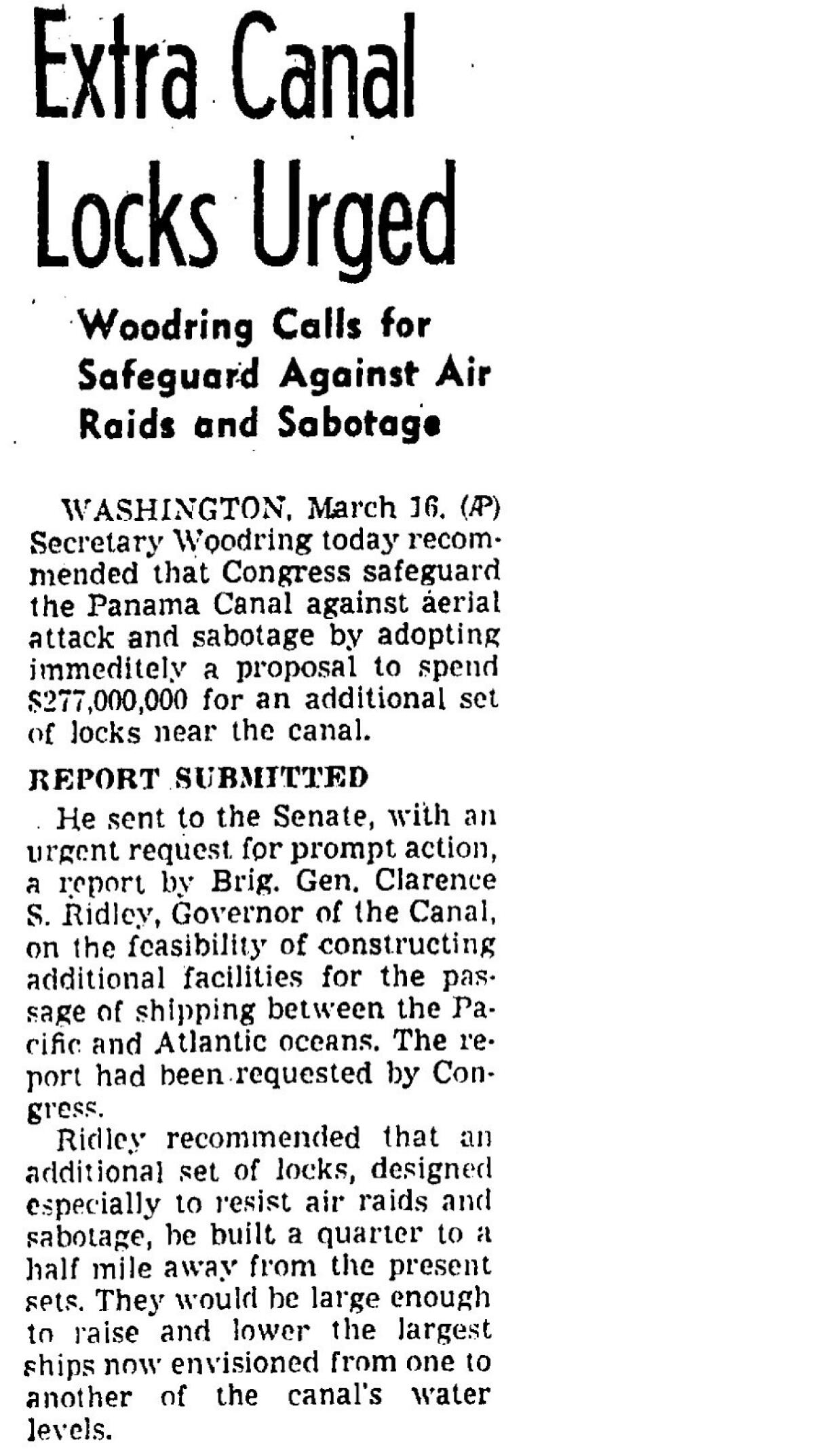
1935-1939
In the late 1930s, additional construction was planned or completed for the Panama Canal, including extra water storage and more locks. In 1935, the Madden Dam was created to prevent the flooding of the Chagres River, which flows into Gatun Lake – a major part of the canal. In 1939, a new set of locks were planned in order to carry large U.S. warships through the canal and defend it against enemies. However, the development was canceled after the start of World War II.
[Brig. Gen. Clarence] Ridley recommended that an additional set of locks, designed to resist air raids and sabotage, be built.
— The Associated Press in the March 17, 1939, edition of The Times
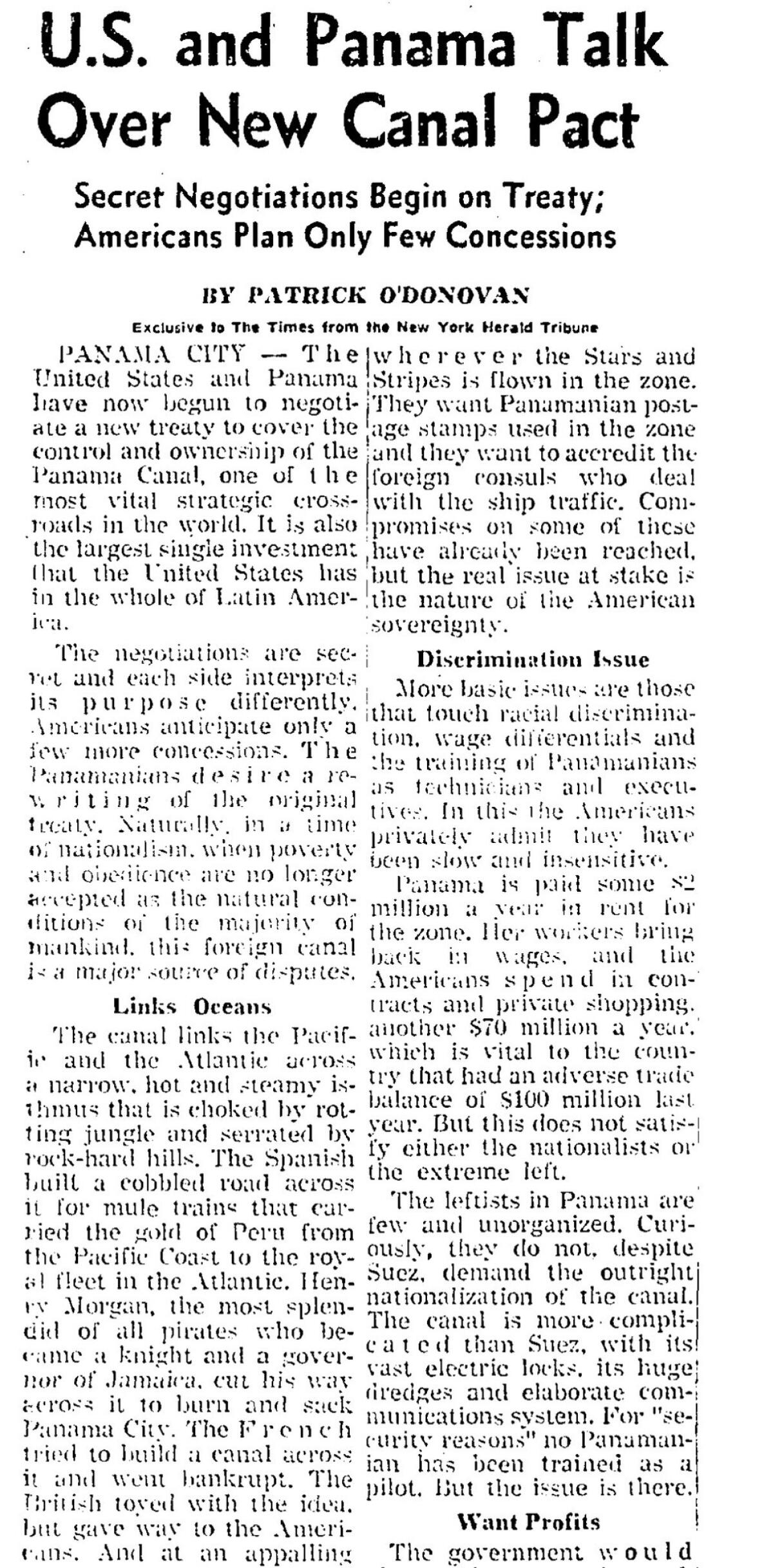
1962
U.S. President John F. Kennedy and Panama President Roberto Chiari met in Washington for a series of secret talks regarding the occupation of the Panama Canal. The negotiations were a result of continued unrest in Panama — where people were growing more resistant to American control of the canal — and The Times reported that Chiari was expected to seek concessions. The talks, which ultimately worked in favor of the U.S., led to years of unrest in the canal zone, culminating in several riots and other violent demonstrations.
The Panamanian leader is expected to be frank indeed in his talks with the President, talks that could test the solidity of the Alliance for Progress.
— Dan Kurzman in the June 13, 1962, edition of The Times
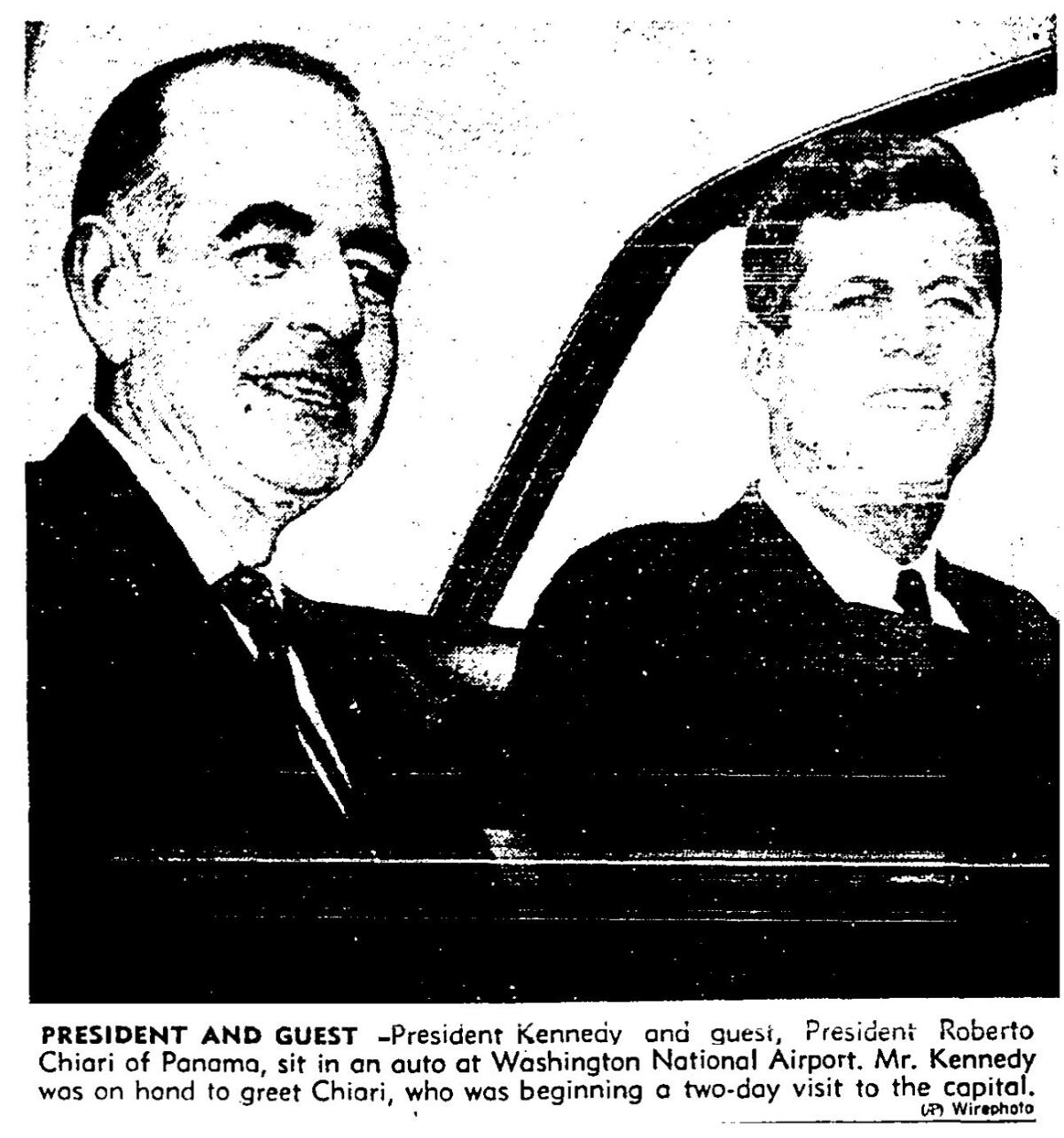
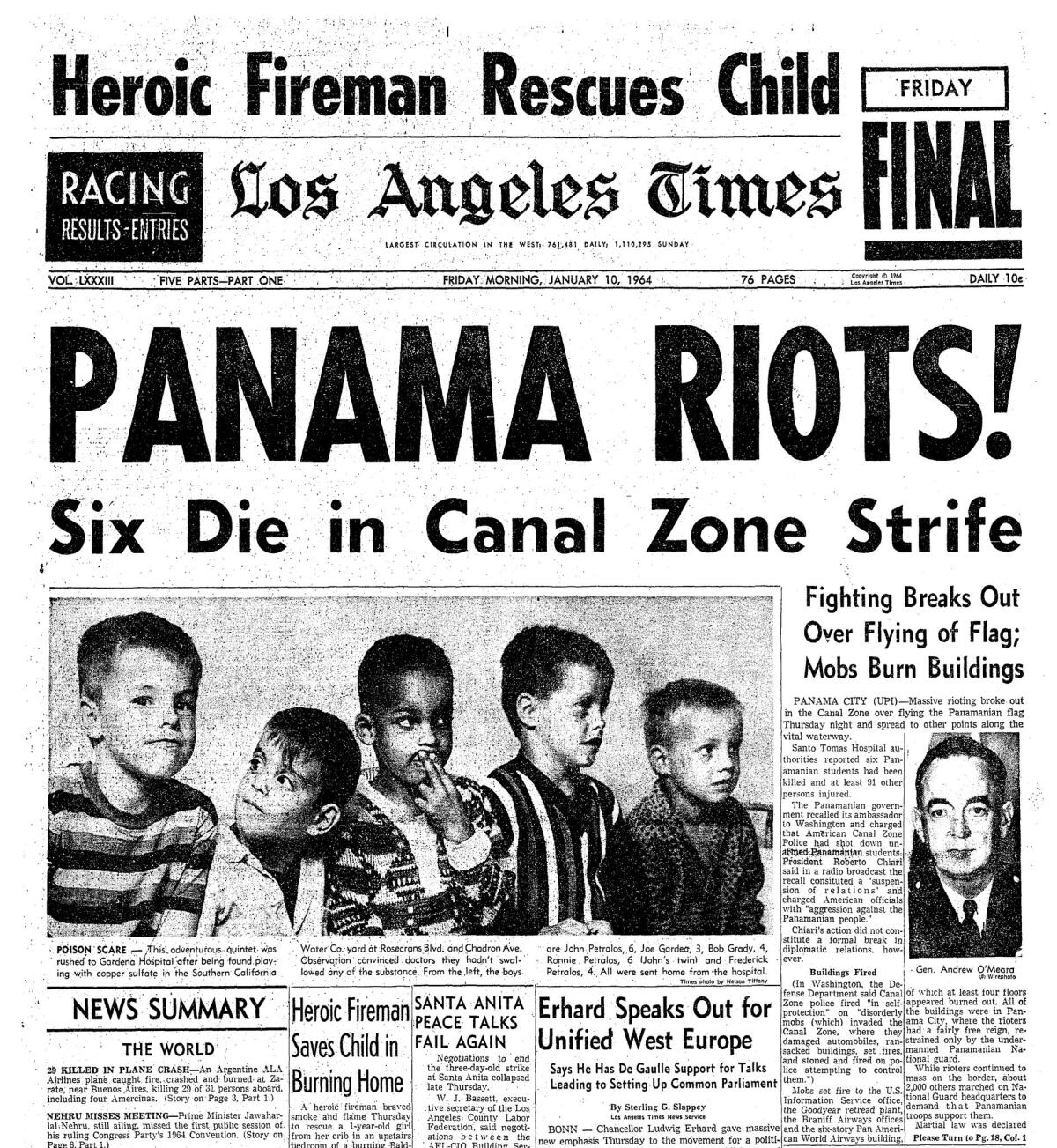
Jan. 9, 1964
Tension over the American occupation of the Panama Canal culminated in the deaths of six Panamanian students. Ninety-one other people were injured. The violent riots broke out over flying the Panamanian flag in the Canal Zone, and The Times reported that the Panama government charged U.S. officials with shooting down the unarmed students. As a result, the government recalled its ambassador in Washington, which President Roberto Chiari said was a “suspension of relations” with the U.S.
President Roberto Chiari ... charged American officials with 'aggression against the Panamanian people.'
— UPI in the Jan. 10, 1964, edition of The Times
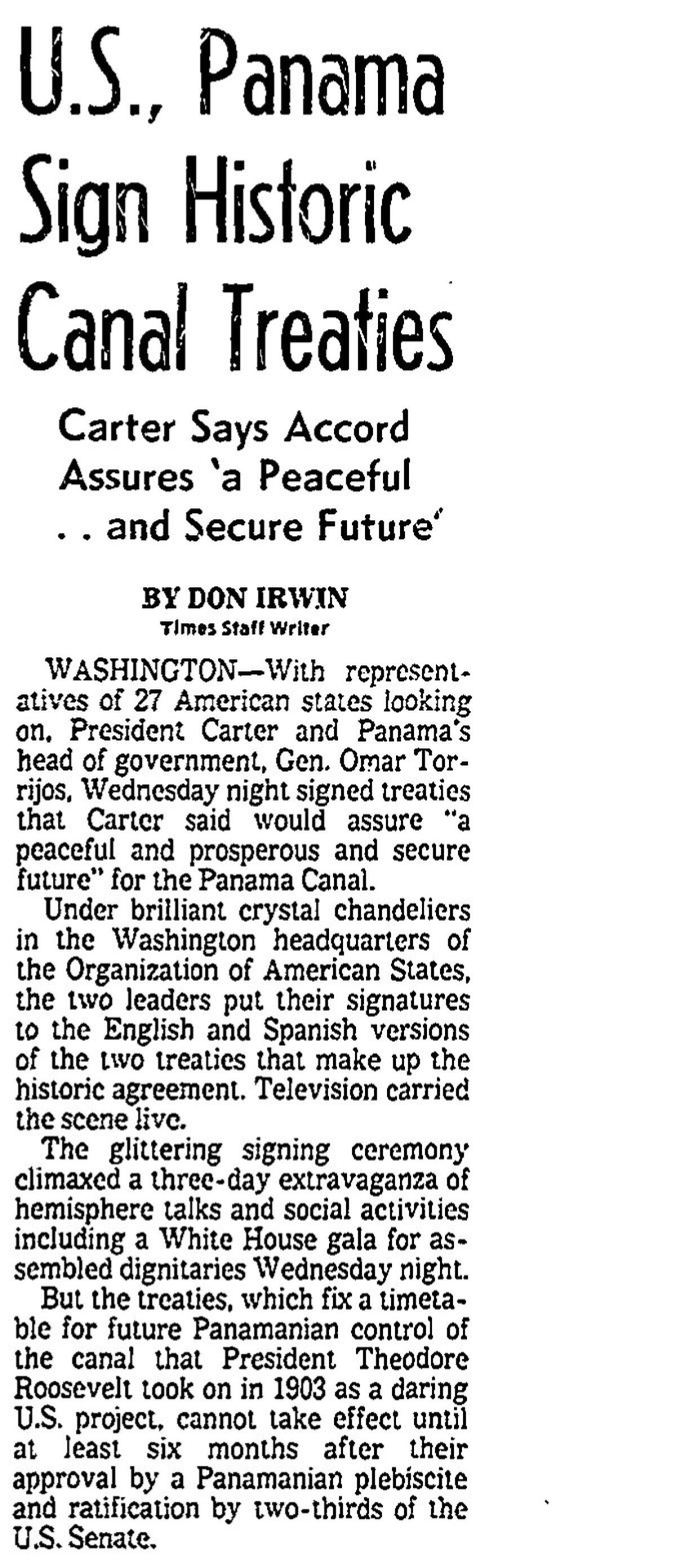
Sept. 7, 1977
After decades of unrest, President Jimmy Carter and Panama’s head of government, Gen. Omar Torrijos, signed treaties that guaranteed Panama would regain control of the Panama Canal. The historic agreement effectively ended more than half a century of U.S. rule and set a timetable for Panama to regain the canal on Dec. 31, 1999. The treaties also established the canal as a neutral waterway through which any state may pass and committed both Panama and the U.S. to defending the canal should it be attacked. Panama ratified the treaties via referendum later in 1977 and the U.S. Senate voted in favor of ratification in 1978.
Carter said the new partnership would 'ensure that this vital waterway will continue to be well operated, safe and open to shipping by all nations.'
— Don Irwin in the Sept. 8, 1977, edition of The Times
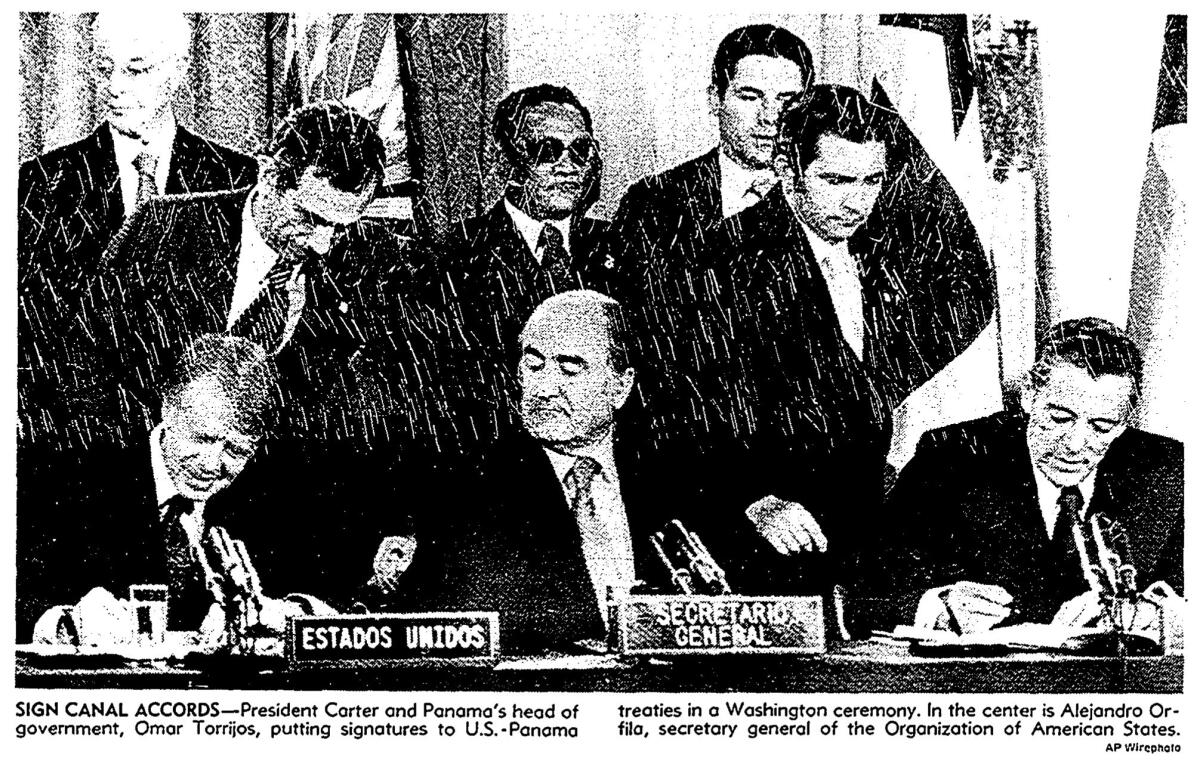
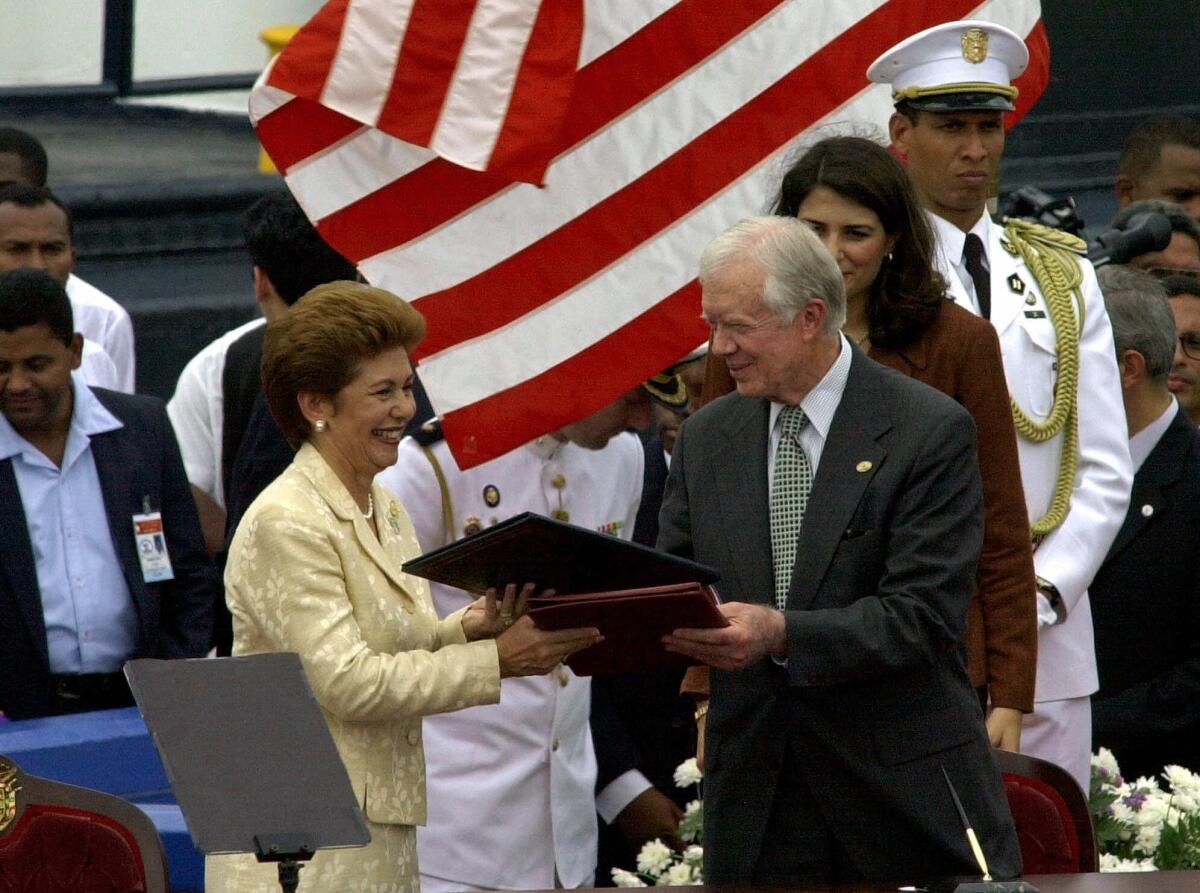
Dec. 31, 1999
Control of the Panama Canal was officially transferred to Panama nearly a century after the U.S. purchased it in 1903. At times, as many as 30,000 U.S. soldiers and civilians had lived in the former Canal Zone, which literally and figuratively divided the country.
After 1999, the canal was put under the authority of the government-run Panama Canal Authority. Today, it takes ships six to eight hours to pass through the waterway, which has remained neutral and is a chief revenue resource for the country.
It has been a uniquely American form of colonialism ... it left influences that have determined the demographics, economy and social structure of Panama.
— Juanita Darling in the Jan. 1, 2000, edition of The Times
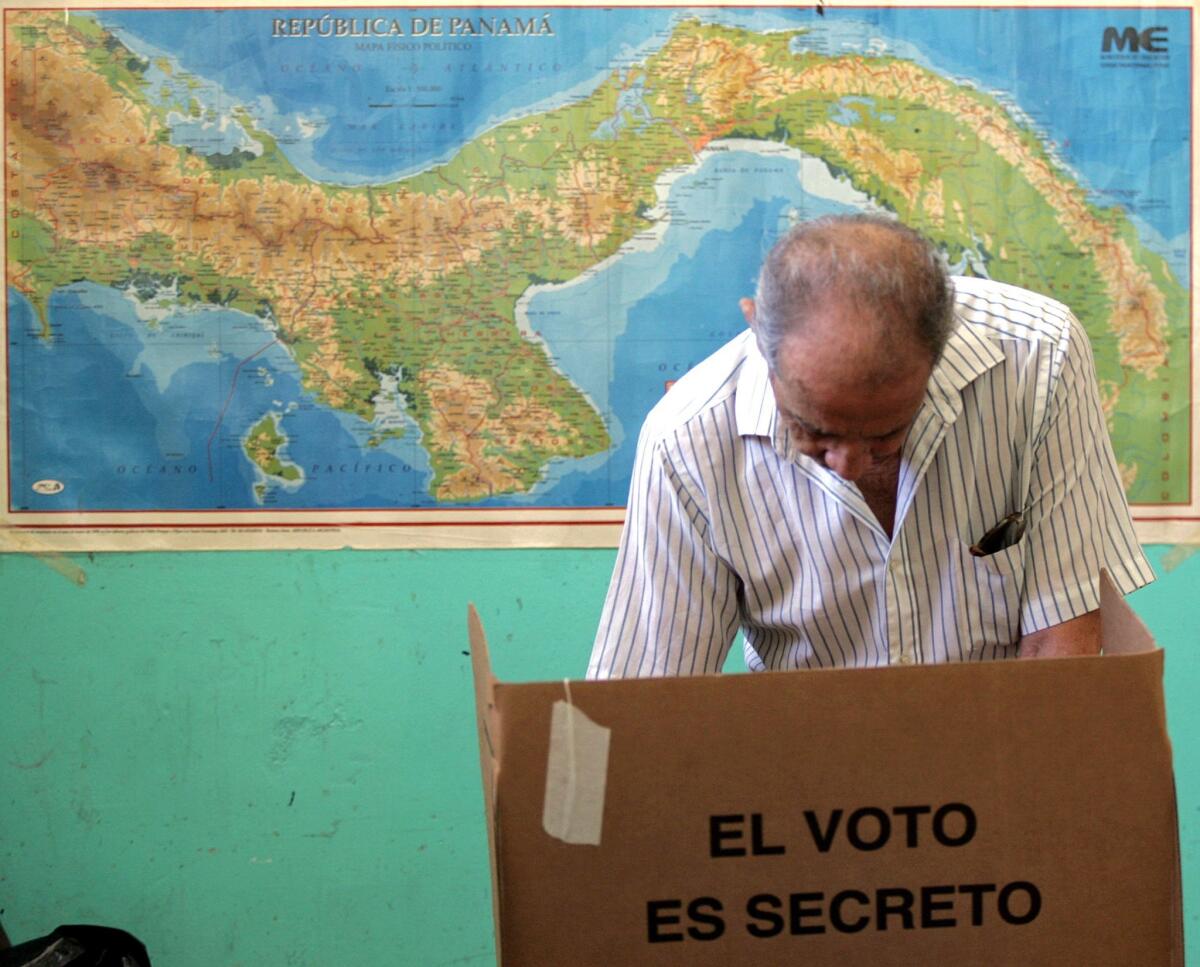
Oct. 22, 2006
Panamanians voted to pass a $5.2 billion project aimed at expanding the Panama Canal — the first major modification to the waterway since its opening in 1914. With 78% of people in favor, the vote was a big win for President Martin Torrijos, who called the expansion project a "chance of a lifetime" for Panama.
From the Archives: Panama Canal plan wins easy passage »
At the time, the Panama government expected the project would create 7,000 jobs and be completed in eight years, just in time for the canal’s 100th birthday. But others were skeptical, saying the government didn’t have the resources to finish the expansion while also dealing with high poverty rates.
Panamanian and international investors expect the project to spark economic growth here.
— Chris Kraul in the Oct. 23, 2006, edition of The Times

Sept. 3, 2007
After almost a year of planning, construction began on the Panama Canal expansion project. The goal of the job, as reported by The Times, was to accommodate ships carrying up to 12,000 containers in order to capture a bigger share of the international shipping business. Previously, ships could carry a maximum of 5,000 containers through the waterway.
From the Archives: Panama launches expansion of canal »
The job’s original expected completion date of 2014 was later delayed two years due to cost overruns and work stoppages. Now the expansion, which essentially adds a third lane to the canal in order to cut down on congestion, is scheduled to open Sunday. It’s expected that the project will have widespread ramifications for international trade, including the diversion of traffic from the ports of Los Angeles and Long Beach to the East Coast.
President Torrijos promised that the expanded canal would usher in a new age of economic growth.
— Lucy Conger and Chris Kraul in the Sept. 4, 2007, edition of The Times
Twitter: @dpfunke
ALSO
Lawmakers' trip to Panama coincides with busy legislative week before summer recess
Panama: Tour highlights the country beyond the canal
Panama Canal expansion draws delegates from U.S. seaport states
UPDATES:
11:40 a.m.: This article was updated with additional information dating from 2006 to the present.
This article originally published at 4 a.m.
Sign up for Essential California
The most important California stories and recommendations in your inbox every morning.
You may occasionally receive promotional content from the Los Angeles Times.
